Inbox and Environment News: Issue 485
February 28 - March 6, 2021: Issue 485
Narrabeen-Warriewood Creeks Currently Weed Choked And Full Of Mud
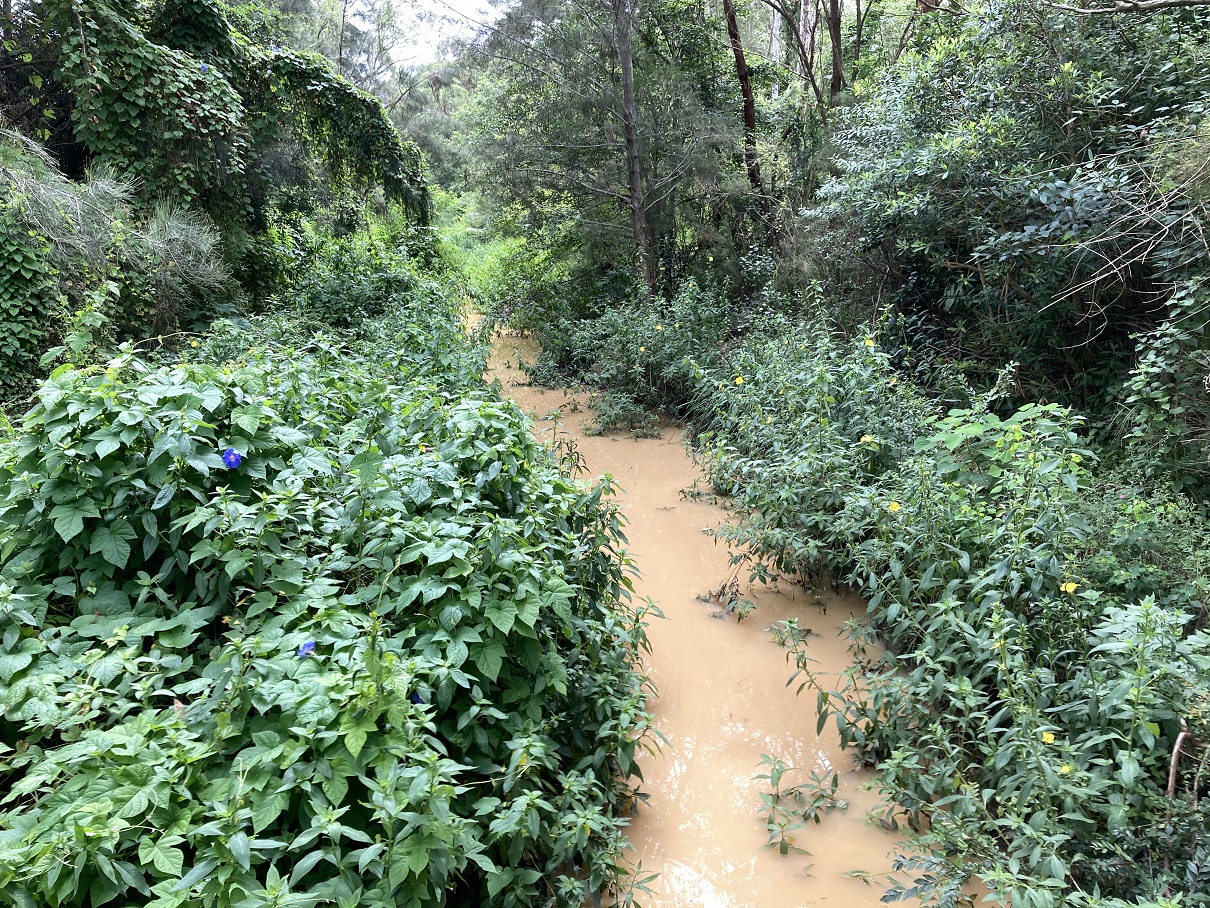
Newport Beach Clean Up: Sunday February 28th, 2021

Why All This Red & White Plastic Tape Along The Narrabeen Creek Path?


Council’s Green Electricity Switch A Winner For The Environment And The Budget

Weed Of The Week: Morning Glory
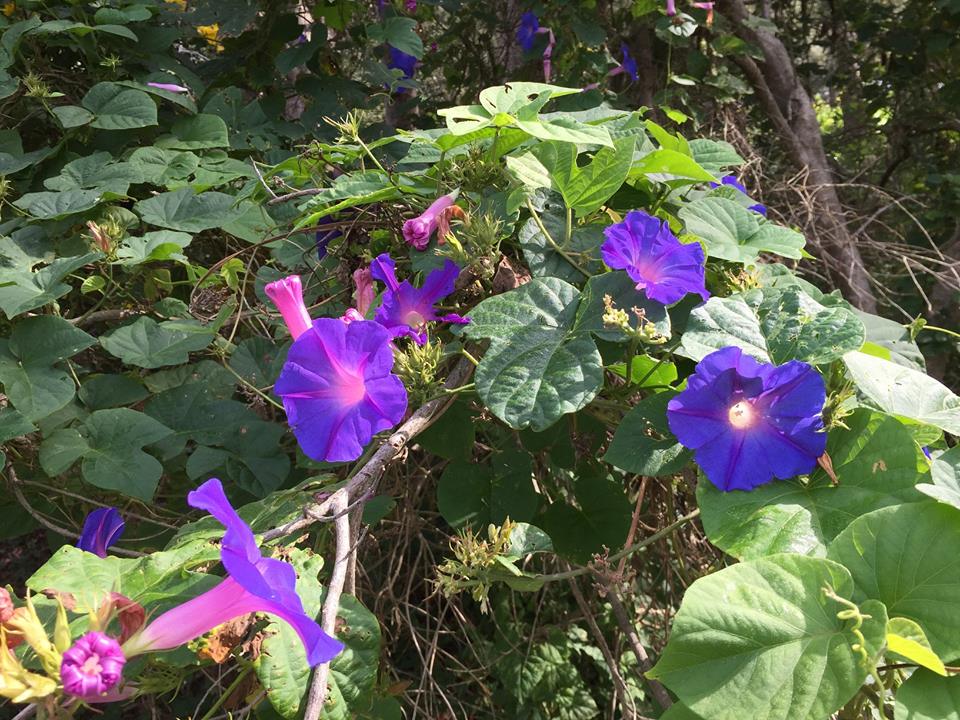
Morning Glory. This one spreads by running along the ground and putting out roots as it goes, then racing up towards the light. A beautiful strangler of native plants - pull out, don't forget the root system.
Common morning glory is mainly a weed of agricultural areas and disturbed sites. It also invades bushland and riparian areas and can be a serious environmental weed in warm moist areas where it chokes out native plants.
Common morning glory is an annual plant with trailing, hairy stems. The leaves are up to 10 cm wide and long, with a pointed tip and heart shaped base. They are sometimes divided into 3 lobes. The funnel-shaped flowers are present all year round. They are purple, violet blue or white with a pale throat and are up to 4 cm in diameter.
Native Plant Of The Week: Flannel Flower
New Nature Bill Won’t Protect Endangered Birds BirdLife Australia States
- BirdLife Australia states Proposed new nature bill won’t protect endangered birds unless significantly expanded
- Morrison Government releases draft bill in response to the Samuels Review of the EPBC Act, Australia’s national threatened species legislation.
- BirdLife Australia says it is a tentative step in the right direction but the low environmental standards the bill proposes will not stop birds like the Swift Parrot from hurtling towards extinction.
New Shorebirds WingThing For Youngsters Available To Download
A Shorebirds WingThing educational brochure for kids (A5) helps children learn about shorebirds, their life and journey. The 2021 revised brochure version was published in February 2021 and is available now. You can download a file copy here.
If you would like a free print copy of this brochure, please send a self-addressed envelope with A$1.10 postage (or larger if you would like it unfolded) affixed to: BirdLife Australia, Shorebird WingThing Request, 2-05Shorebird WingThing/60 Leicester St, Carlton VIC 3053.

Birds In Our Back Yard: Last Week Of Summer 2021
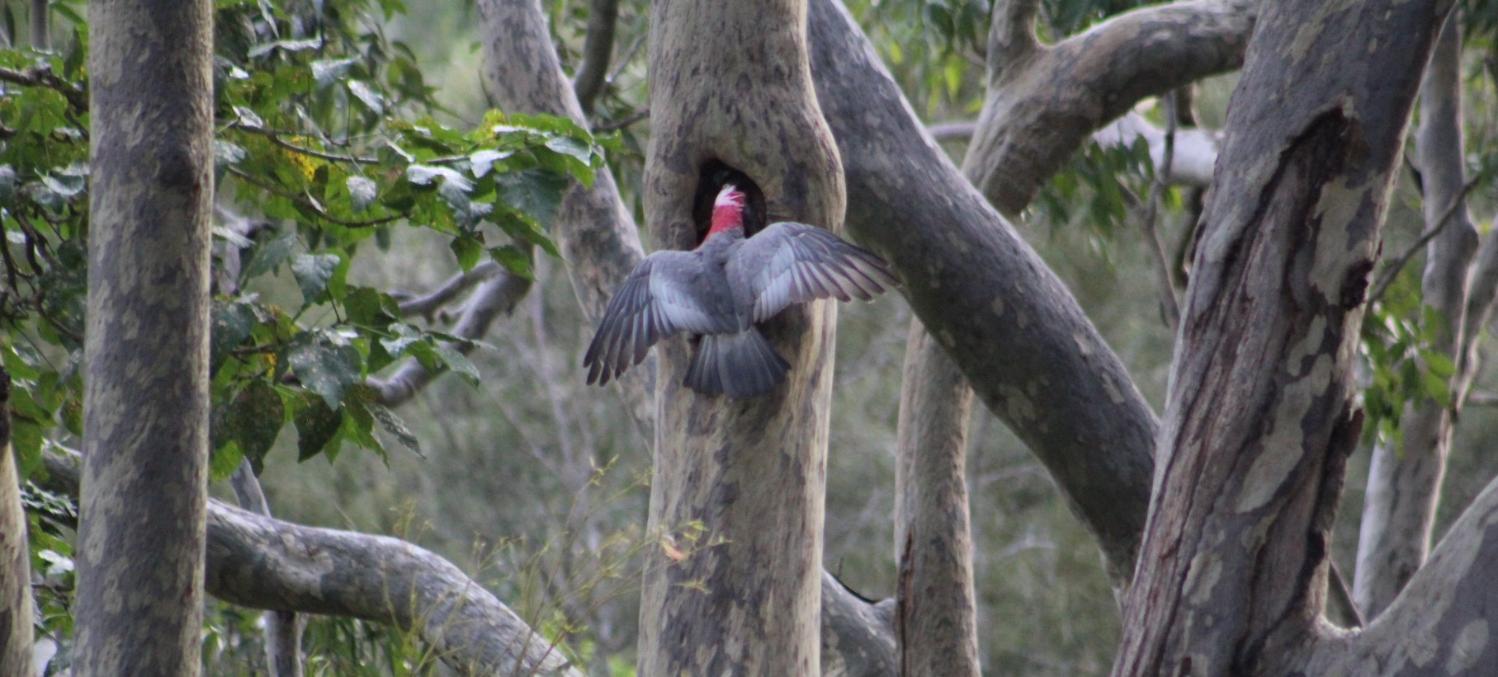
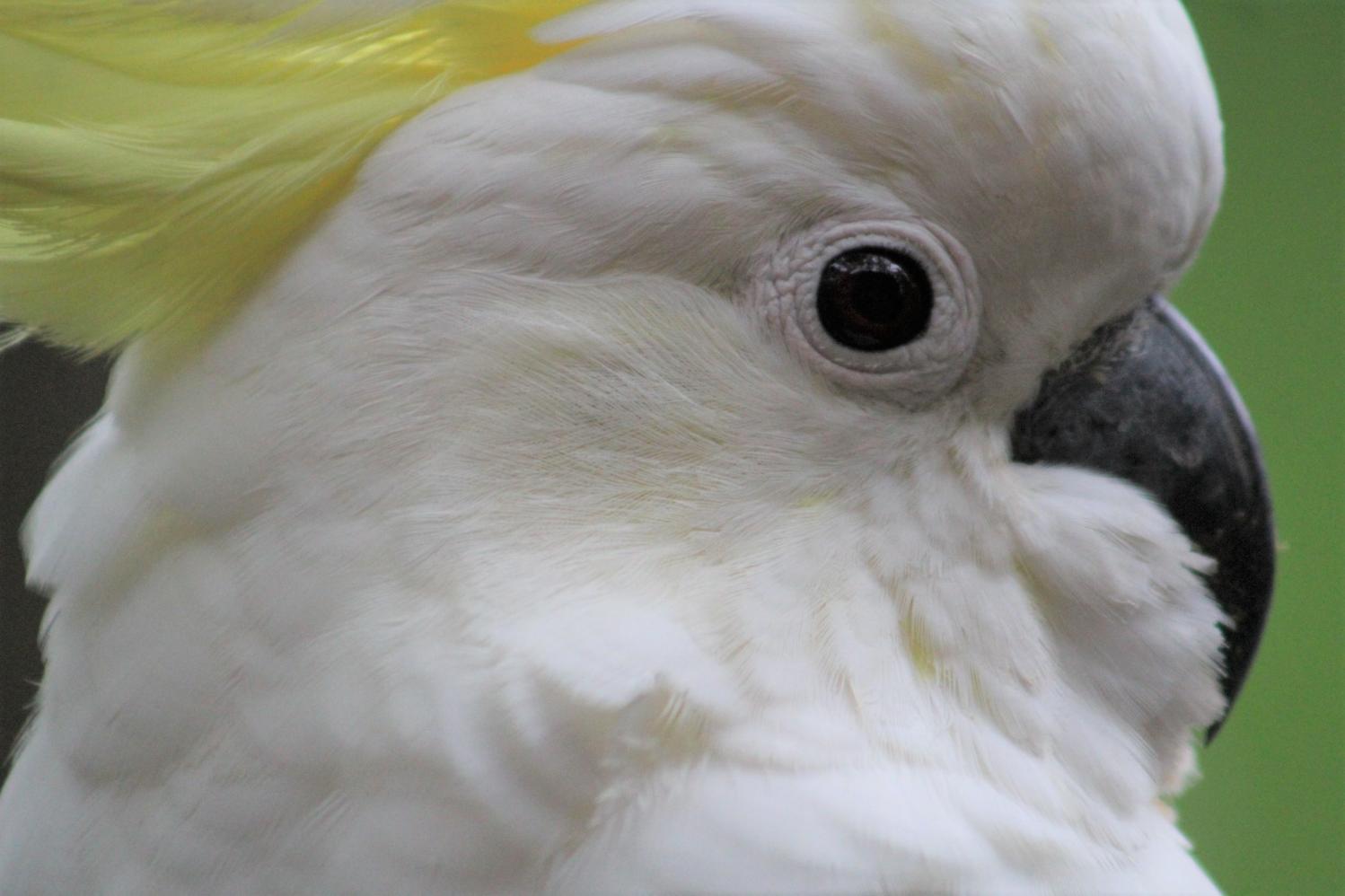
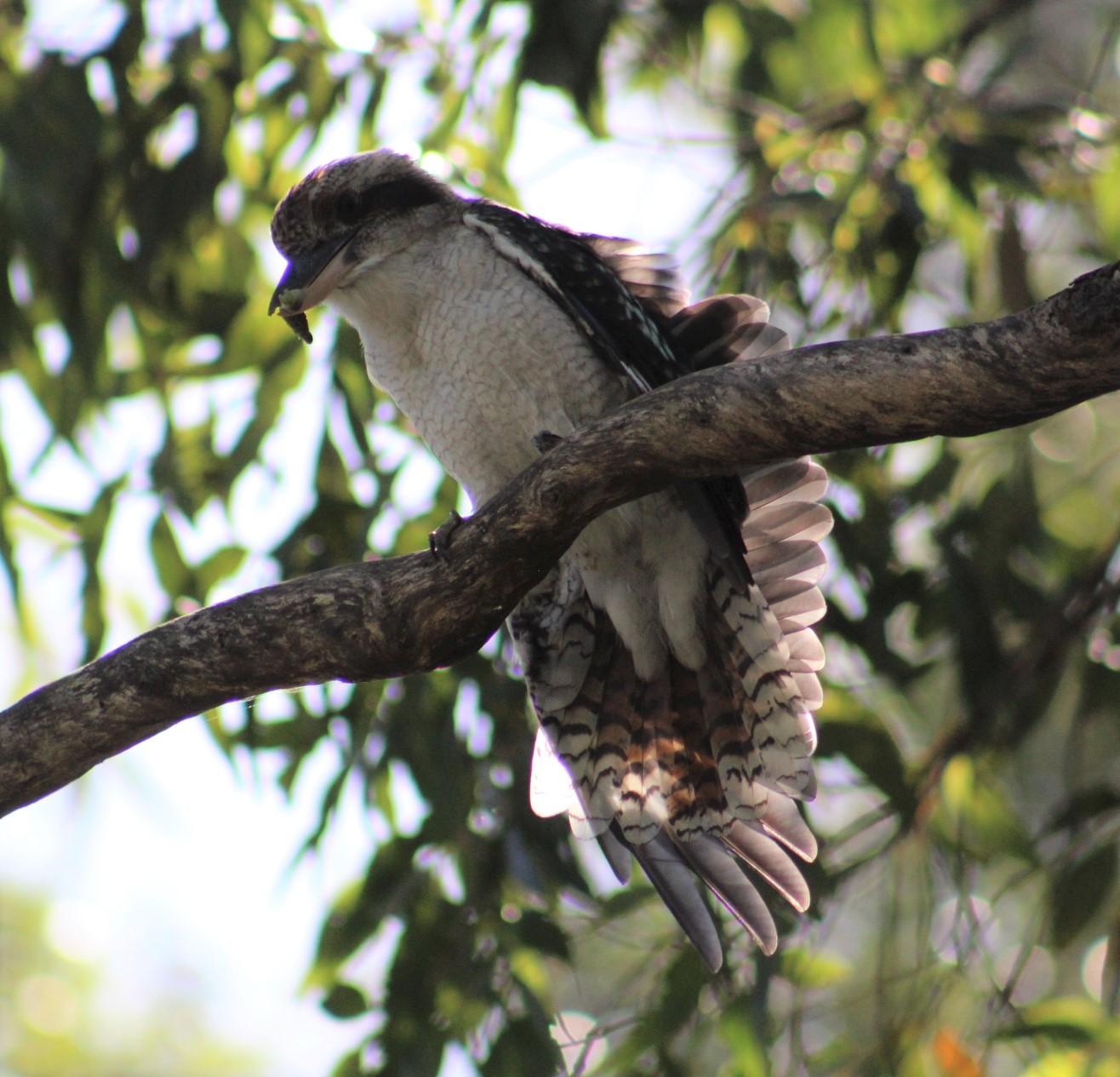
Bushcare In Pittwater
Where we work Which day What time
Avalon
Angophora Reserve 3rd Sunday 8:30 - 11:30am
Avalon Dunes 1st Sunday 8:30 - 11:30am
Avalon Golf Course 2nd Wednesday 3 - 5:30pm
Careel Creek 4th Saturday 8:30 - 11:30am
Toongari Reserve 3rd Saturday 9 - 12noon (8 - 11am in summer)
Bangalley Headland 2nd Sunday 9 to 12noon
Bayview
Winnererremy Bay 4th Sunday 9 to 12noon
Bilgola
North Bilgola Beach 3rd Monday 9 - 12noon
Algona Reserve 1st Saturday 9 - 12noon
Plateau Park 1st Friday 8:30 - 11:30am
Church Point
Browns Bay Reserve 1st Tuesday 9 - 12noon
McCarrs Creek Reserve Contact Bushcare Officer To be confirmed
Clareville
Old Wharf Reserve 3rd Saturday 8 - 11am
Elanora
Kundibah Reserve 4th Sunday 8:30 - 11:30am
 Mona Vale
Mona Vale Mona Vale Beach Basin 1st Saturday 8 - 11am
Mona Vale Dunes 2nd Saturday +3rd Thursday 8:30 - 11:30am
Newport
Bungan Beach 4th Sunday 9 - 12noon
Crescent Reserve 3rd Sunday 9 - 12noon
North Newport Beach 4th Saturday 8:30 - 11:30am
Porter Reserve 2nd Saturday 8 - 11am
North Narrabeen
Irrawong Reserve 2nd Saturday 2 - 5pm
Palm Beach
North Palm Beach Dunes 3rd Saturday 9 - 12noon
Scotland Island
Catherine Park 2nd Sunday 10 - 12:30pm
Elizabeth Park 1st Saturday 9 - 12noon
Pathilda Reserve 3rd Saturday 9 - 12noon
Warriewood
Warriewood Wetlands 1st Sunday 8:30 - 11:30am
Whale Beach
Norma Park 1st Friday 9 - 12noon
Western Foreshores
Coopers Point, Elvina Bay 2nd Sunday 10 - 1pm
Rocky Point, Elvina Bay 1st Monday 9 - 12noon
Gardens And Environment Groups And Organisations In Pittwater
Pittwater Reserves

NSW State Water Strategy: Have Your Say
Senate Inquiry Into Environment Protection And Biodiversity Conservation Amendment (Regional Forest Agreements) Bill 2020
''This Bill will affirm and clarify the Commonwealth’s intent regarding Regional Forest Agreements to make it explicitly clear that forestry operations in a Regional Forest Agreement region are exempt from Part 3 of the EPBC Act, and that compliance matters are to be dealt with through the state regulatory framework.
Requiring native forestry operations to seek EPBC Act approval would create operationally unviable delays in planned harvesting operations that have already been subjected to significant environmental planning and approvals and create congestion in the approvals pipeline.
This is achieved by removing the ambiguity of what it means to be “undertaken in accordance with a Regional Forest Agreement” (subsection 38(1) of the EPBC Act), which a recent Federal Court decision (Friends of Leadbeater’s Possum Inc v VicForests (No 4) [2020] FCA 704 has shown is not explicit with respect to the Commonwealth’s intended meaning.
Furthermore, the operation of subsection 38(1) is just one of several legal questions considered by Justice Mortimer’s judgment and subsequent appeal. There is no guarantee that the appeal will deal with the substantive question about the operation of subsection 38(1).
The Independent review of the EPBC Act Interim Report (Samuel 2020) recommended addressing this uncertainty:
- “During the course of this Review, the Federal Court found that an operator had breached the terms of an RFA and should therefore be subject to the ordinary controlling provisions of the EPBC Act. Legal ambiguities in the relationship between EPBC Act and the RFA Act should be clarified, so that the Commonwealth’s interests in protecting the environment interact with the RFA framework in a streamlined way.” (page 10), and
- “The EPBC Act recognises the RFA Act, and additional assessment and approvals are not required for forestry activities conducted in accordance with an RFA (except where forestry operations are in a World Heritage property or a Ramsar wetland). These settings are colloquially referred to as the 'RFA exemption', which is somewhat of a misnomer.” (page 60).
The Interim Report also made it clear that under a regional model of empowering the states, the oversight functions would be the responsibility of the states through accredited frameworks (as occurs with Regional Forest Agreements):
“For projects approved under accredited arrangements, the accredited regulator would be responsible for ensuring that projects comply with requirements, across the whole project cycle including transparent post-approval monitoring, compliance and enforcement. The Commonwealth should retain the ability to intervene in project-level compliance and enforcement where egregious breaches are not being effectively enforced by the accredited party.” (page 55).
''The Commonwealth must act urgently to resolve this uncertainty to ensure that the tens of thousands of jobs that depend on Australia’s native forestry operations are not exposed to the sort of crisis now facing Victoria’s native hardwood sector. This amendment Bill will achieve this outcome.''
- First reading: Text of the bill as introduced into the Parliament
- Third reading: Prepared if the bill is amended by the house in which it was introduced. This version of the bill is then considered by the second house.
- As passed by both houses: Final text of bill agreed to by both the House of Representatives and the Senate which is presented to the Governor-General for assent.
World First Germination Method Maps A Road To Recovery For Critically Endangered Orchids
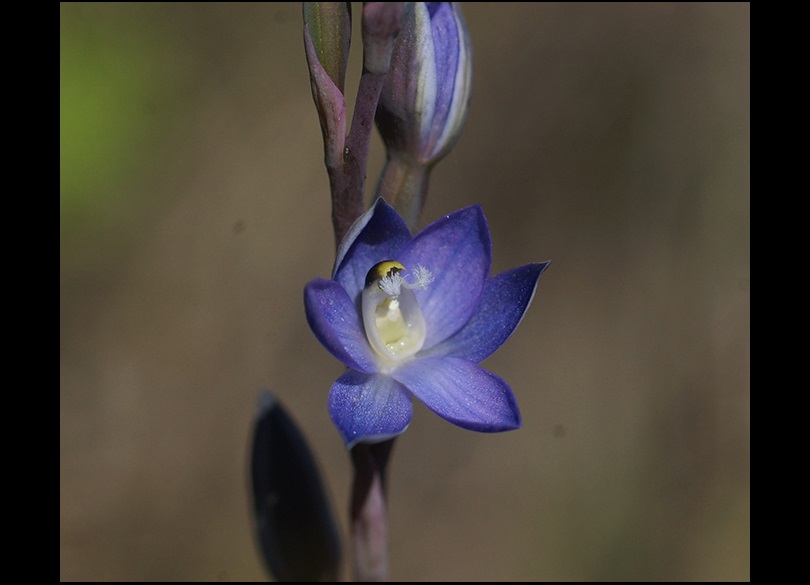
NSW Government Plan To Protect And Preserve Bushfire Affected Biodiversity
- developing conservation plans for threatened species and communities facing the most significant fire impacts
- establishing new breeding and propagation programs for priority threatened species
- continuing to implement comprehensive post-fire feral animal and weed control
- monitoring species, ecosystems and landscapes over the long-term
- building the capacity of the wildlife rescue and rehabilitation sector and fire combat agencies to respond to future fire events
- increasing opportunities for Aboriginal people to practice cultural fire management and manage fire-affected sites.
Renewable Energy Sector Board To Boost Local Manufacturing And Jobs
- Daniel Walton, National Secretary, Australian Workers’ Union
- Craig Memery, Policy Team Leader, Energy + Water Consumers’ Advocacy Program, PIAC
- Mark Cain, Chief Executive, Australian Steel Institute
- John Coyle, Director, Varley Group
- Anna Freeman, Policy Director – Energy Generation, Clean Energy Council
- Lynne Gallagher, Chief Executive Officer, Energy Consumers Australia
- Grahame Kelly, General Secretary, CFMEU (Mining and Energy Division)
- James Hay, Chief Executive, Energy Corporation of NSW
- Paul Italiano, Chief Executive Officer, TransGrid
- Justin Page, Secretary NSW & ACT, Electrical Trades Union
- Matthew Robertson, National Strategy & Market Development Manager, BlueScope Steel Australia
- Stacey Sleeman, Chief Financial Officer & Company Secretary, Tomago Aluminium
- Rod Stowe, former NSW Fair Trading Commissioner
- Cory Wright, State Secretary, Australian Manufacturing Workers’ Union
Pacific Highway Road Construction Company Fined $30K For Pollution
Bird Missing For 172 Years Rediscovered In Borneo Rainforest
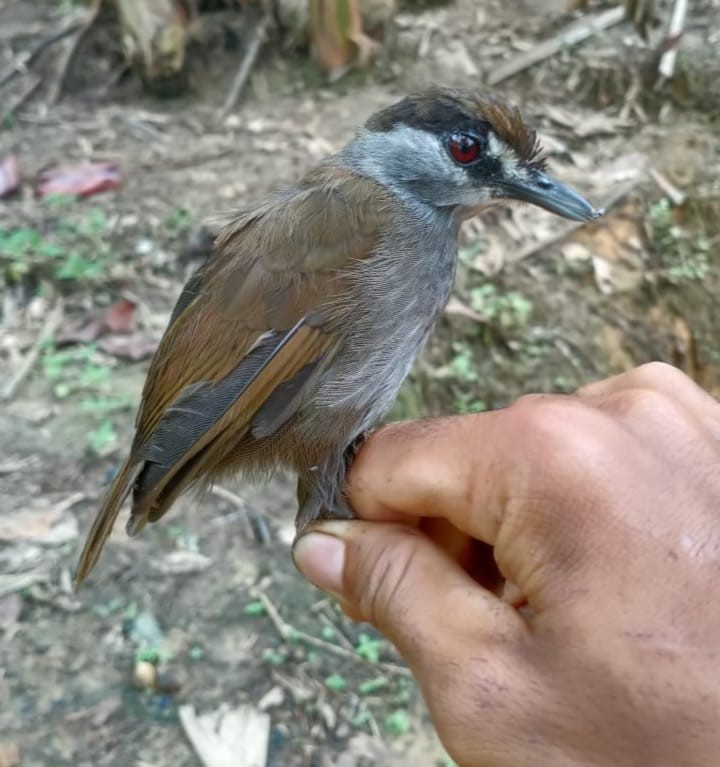
Australia's marine (un)protected areas: government zoning bias has left marine life in peril since 2012

Last week Australia joined a new alliance of 40 countries pledging to protect 30% of the world’s oceans by 2030 from pollution, overfishing, climate change and other environmental threats. Australia already boasts one of the largest networks of marine protected areas in the world, with about half of Commonwealth waters around mainland Australia under some form of protection.
Job done? Actually, no.
Despite the size of our protected areas, marine wildlife continues to vanish. A government report card recently scored the Great Barrier Reef a “D” for its failing health. Meanwhile, commercial fishing depletes non-target or non-economic species as collateral damage, and damages marine habitats through trawling, the marine equivalent of clear felling forests. These issues are extensive, but poorly understood.
So why the paradox? Our research analysis reveals that size is misleading. Marine zonings vary in their effectiveness in protecting biodiversity, and zones established in 2012, 2015 and 2018 put effective protection in the wrong places.
Unhelpful From The Start
In a rich, developed country, a society’s commitment to nature conservation is measured by what it’s prepared to give up. In Australia, that’s not much.
In late 2012, Labor announced a massive increase in Commonwealth marine protected areas (MPAs). But it failed to mention that the placement of “highly protected zones” — which don’t allow any commercial extraction — had no effect on oil and gas activities and a very minor effect on commercial fishing.
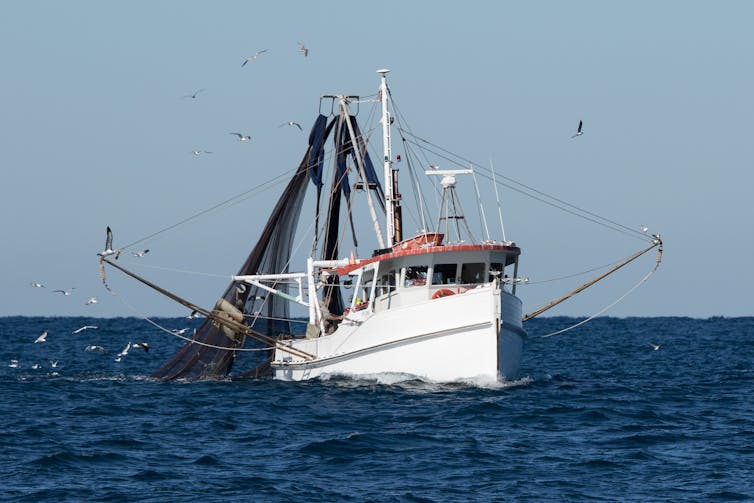
As a result, the contribution of the 2012 MPAs to conservation was disproportionately small.
In 2015 the Federal Coalition changed the 2012 zonings. In 2018 the Coalition changed them again.
The Coalition was openly hostile toward the 2012 MPA expansion, so it came as no surprise the 2015 and 2018 MPA systems would become even more strongly residual — biased towards areas with least promise for extractive activities.
Our recent paper tells the story in detail, but here’s a summary.
Zoning The Ocean To Make Almost No Difference
Labor’s 2012 additions to the MPA system covered 2.4 million square kilometres, an impressive figure at first glance.
Under the Coalition, the boundaries of Labor’s new MPAs were not altered, but there were large changes to the internal zonings, which specify permitted uses, in 2015 and 2018.
The changes meant highly protected zones declined from 37% of the total MPA system in 2012 to about 22% in 2018. Other zones that allow fishing with varying restrictions, or that place few restrictions on commercial extraction, made up the rest. The conservation benefits of those other zones — dubbed “partially protected areas” — are dubious.
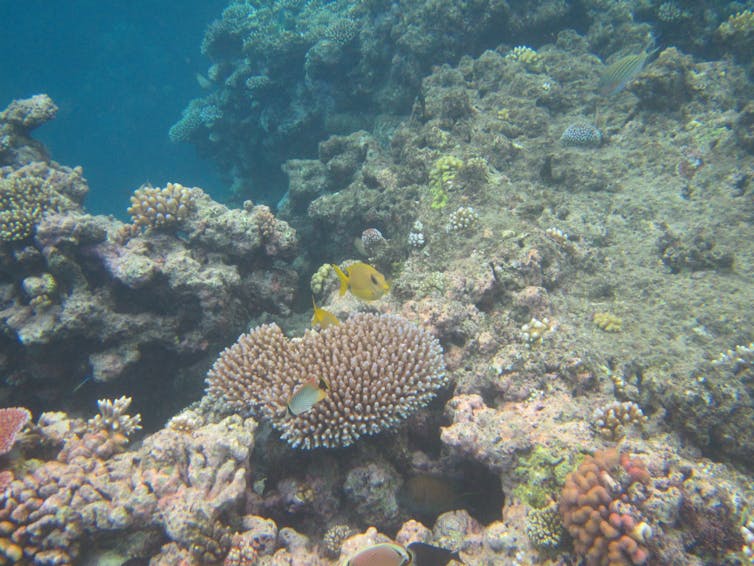
How much difference did all the zoning and rezoning make to marine conservation? Very little.
That’s because, from the start, highly protected zones were put in places with no petroleum extraction and low previous fishing yield. The bias was only exaggerated in 2015, and again in 2018.
By 2018, less than 1% of the area previously used for Commonwealth pelagic longlining had been protected from longlining. Pelagic longlining involves setting baited hooks on lines that can be kilometres long, suspended in the water. It can seriously harm non-target species, including sharks and seabirds.
Likewise, only about 1.5% of Australia’s previously trawled areas became covered by zones that prohibit trawling, a practice also known to have serious biodiversity impacts, such as destroying seafloor habitat.
The zoning of the Coral Sea tells part of the story. The 2012 highly protected zones carefully avoided most commercial fishing in this vast region of open ocean, and research showed the benefits to conservation were “minimal”. When the 2012 zones were changed, the area open to fishing methods that pose ecological risks increased further.
Is Australia Really Leading The World?
After the latest weakening — proposed in 2017 and formalised in 2018 — of the already weak 2012 marine protection, the federal environment minister and the director of Parks Australia said the revisions achieved the right balance between conservation and use.
Read more: The Coral Sea: an ocean jewel that needs more protection
In terms of commercial fishing, we show the “balance” was about 2% conservation and 98% use across all of Commonwealth marine waters, which cover almost six million square kilometres.
In real terms, Australia’s marine protection is minuscule, and its marine unprotected areas are vast — a failure that has attracted international criticism. In 2017, for instance, 1,286 researchers from 45 countries lambasted the federal government’s draft marine park management plans that are now in place.
The current highly protected zones might guard against future expansion of petroleum extraction and commercial fishing, as technologies and markets evolve. Unfortunately, however, the chances of that seem slim.
Australian MPA decisions since 2012 suggest strongly that, if highly protected zones are found to prevent profitable extraction, they will be downgraded or moved so they don’t get in the way.
Three Ways Australia Could Lead The World (Again)
Australia led the world with the 2004 rezoning of the Great Barrier Reef Marine Park, a systematic exercise that placed about a third of the Park in highly protected zones. But almost 17 years on, we can see plenty of room for improvement in marine conservation as we learn what works and what doesn’t.
Read more: The Great Barrier Reef is in trouble. There are a whopping 45 reasons why
How could Australia lead the world now? A first step would be to drop the deception that square kilometres say anything meaningful about conservation.
Our commitment to marine conservation will be measured by how much oil and gas we leave under the seabed, how many fish we leave in the water, and how we catch the others. Decarbonising and properly managing catchments and coastal zones will also be critical.
A second step would be to establish explicit, quantitative, scientifically informed goals for conservation of individual species and ecosystems in highly protected zones. The lack of such goals allowed zonings from 2012 to 2018 to be passed off as representative of marine environments, when they were not.
Read more: Humans threaten the Antarctic Peninsula's fragile ecosystem. A marine protected area is long overdue
A third step would be to achieve explicit conservation goals through consultation with diverse stakeholders. This includes co-design and co-management of coastal MPAs that empower local communities and Indigenous peoples from the outset, rather than through consultation late in the process.
After many years of debate over MPAs, some will throw their hands up at the prospect of yet more planning. But that’s what’s needed to make Australia’s MPA zoning effective, along with the (recently elusive) vision and commitment needed for political leadership in real marine conservation.![]()
Bob Pressey, Professor, Conservation Planning, ARC Centre of Excellence for Coral Reef Studies, James Cook University; Jorge G. Álvarez-Romero, Senior Research Fellow, James Cook University; Rodolphe Devillers, Senior research scientist, Institut de recherche pour le développement (IRD), and Trevor J Ward, Visiting Fellow, University of Technology Sydney
This article is republished from The Conversation under a Creative Commons license. Read the original article.
'Destruction by a thousand cuts': the relentless threat mining poses to the Pilbara cultural landscape
Sarah Holcombe, The University of Queensland and Bronwyn Fredericks, The University of QueenslandJust as the parliamentary inquiry into Rio Tinto’s destruction of the Juukan Gorge rock shelters was reconvening in Canberra, another culturally significant site was damaged at one of BHP’s iron ore mines in the Pilbara.
This latest rock shelter, a registered site for the Banjima peoples, was reportedly damaged by a rockfall in late January. BHP said the site was not part of its current mining operations and the cause of the rockfall was not known.
Both incidents make clear the invidious and relentless threat to Aboriginal cultural heritage in the Pilbara (and elsewhere in Australian mining regions).
The destruction of one ancient and sacred rock shelter is, of course, devastating. But there’s a greater and as yet unrecognised loss to cultural heritage that is occurring from the “cumulative impacts” of mining activities in the Pilbara. It’s destruction by a thousand cuts.
A Heavily Industrialised Landscape
It is difficult for most people to imagine the scale of the iron ore and gas operations in the region. Large swathes of this remote and ecologically delicate environment (a global biodiversity hotspot for subterranean fauna) have been transformed over the last several decades into a heavily industrialised landscape.
There are more than 25 industrial-scale iron ore mines in the Pilbara. Of these, Rio Tinto owns 16. They are part of an integrated network to transport iron ore out of the region, which includes four independent port terminals, a 1,700-kilometre rail network and other related infrastructure.
Western Australia’s iron ore sales have more than doubled over the past decade from 317 million tonnes in 2008-09 to 794 million tonnes in 2018-19. This was worth more than A$4.4 billion in royalties to the WA government in 2018.
Ancestral Paths Are Being ‘Boxed Up’
As a submission to the parliamentary inquiry from the Wintawari Guruma Aboriginal Corporation stated, more than 93% of their Country is covered by mining tenements. There are seven mines in total, most owned by Rio Tinto.
This group is not unusual. The neighbouring Yinhawangka have four Rio Tinto mines on their Country, plus others owned by different companies, including FMG.
Under the current WA Aboriginal Heritage Act, the focus of heritage protection efforts is on tangible (often archaeological) sites defined as discrete “way-points” on a map and separated from the cultural landscape that supports them.
But this is a core misunderstanding of cultural heritage management. Intangible or ethnographic sites, which are rarely visible to non-Indigenous people or those who are not customary knowledge holders, struggle to find recognition.
Read more: Friday essay: masters of the future or heirs of the past? Mining, history and Indigenous ownership
These intangible sites are part of the interconnected spiritual journey known as “dreaming tracks” and “song-lines”. For the knowledge holders, these ancestral paths represent a fundamental truth of connection to Country.
However, as mining activity intensifies in the Pilbara, even if certain “sites” are protected, these ancestral paths are being “boxed up” and cut off from one another.
This is because the WA Aboriginal Heritage Act assesses applications and projects on an individual basis, without reference to the cumulative impacts of mining activities or the bigger picture of regional and national heritage.
What Are Cumulative Impacts?
These cumulative impacts include such things as
1) loss of access to sacred sites, cultural places (including customary harvest grounds) and cultural materials
2) loss of cultural integrity of cultural places through destruction of Country in close proximity
3) loss through indirect effects, such as increased dust, vibration and noise
4) diminished amenities and visual integrity.
In 2015, BHP prepared a “cumulative impact assessment” of its direct and indirect mining footprint in the Pilbara. The authors indicated it was the first of its kind for the region.
Though the focus was purely on the environmental effects of mining activities — not cultural effects — the results are nonetheless revealing.
The authors listed five species from the region, including the olive python and the northern quoll, that are now considered “vulnerable” or “endangered”. These species also have great significance for traditional owners. Yet, they were not engaged in the cumulative impact assessment process.
To the best of our knowledge, none of the major mining companies in the Pilbara have undertaken cumulative impact assessments for Indigenous cultural heritage that encompass the entirety of their operational footprint.
Read more: Can a mining state be pro-heritage? Vital steps to avoid another Juukan Gorge
Land Access Protocols, Locked Gates And PPE
The ability of traditional owners to access Country to care for it, maintain their obligations to it, monitor the effects of mining operations and ensure inter-generational knowledge transfer is another sensitive issue.
Many groups in the Pilbara have “land access protocols” with the companies operating on their land. A publicly available protocol between the Yinhawangka and Rio Tinto gives insight into the strict visitation parameters for the company’s mining leases and tenements.
For instance, the “general conditions” require visitors to have vehicles fitted with a suitable UHF radio set to the sign-posted channels.
The requirements also include
providing information of all the areas that you plan to visit within the … mining lease area, the number of people/vehicles in your group, the date and time that access is required and the duration of your trip.
Each person entering a mining lease must also “meet the minimum PPE requirements”.
Though we recognise the need to manage for occupational health and safety, such intensive requirements would make access extremely difficult and unrealistic for many people, especially the elderly and children.
Land access protocols do not just apply to mining leases, but also to pastoral leases, which are owned by the companies to facilitate the development of mining operations and ensure land access. Rio Tinto owns six such leases in the Pilbara.
The visitation rights for these pastoral leases are similarly strict. The protocols for Rocklea station, for instance, allow native title holders to camp for no more than three nights.
Read more: Juukan Gorge inquiry puts Rio Tinto on notice, but without drastic reforms, it could happen again
The Importance Of Conservation Agreements
WA’s draft new heritage laws contain the phrase “cultural landscapes”, which is a step in the right direction.
However, to truly protect cultural heritage and accommodate Aboriginal rights and interests requires conservation agreements, similar to the Murujuga agreements made between the Commonwealth and both Rio Tinto and Woodside in the Pilbara.
The state government would have to forgo some mining royalties and, in line with recommendations by the parliamentary inquiry, native title holders would have the right to protect sites and declare areas “no-go zones”.
This has been the successful model under the Aboriginal Land Rights Act in the NT for more than 40 years. Such a model recognises
the interdependence of all life within Country constitutes a hard but essential lesson – those who destroy their Country ultimately destroy themselves.
The risk is that if decisive and strong measures aren’t taken, large swathes of the Pilbara will become desecration zones, or “sterilisation” zones, as some Aboriginal groups have termed the industrial mining landscape.
This will be the legacy, not only for the mining companies, but for Australia and most painfully, for the traditional owners who remain long after the miners have gone.![]()
Sarah Holcombe, Senior Research Fellow, The University of Queensland and Bronwyn Fredericks, Pro Vice-Chancellor (Indigenous Engagement), The University of Queensland
This article is republished from The Conversation under a Creative Commons license. Read the original article.
Indigenous expertise is reducing bushfires in northern Australia. It's time to consider similar approaches for other disasters
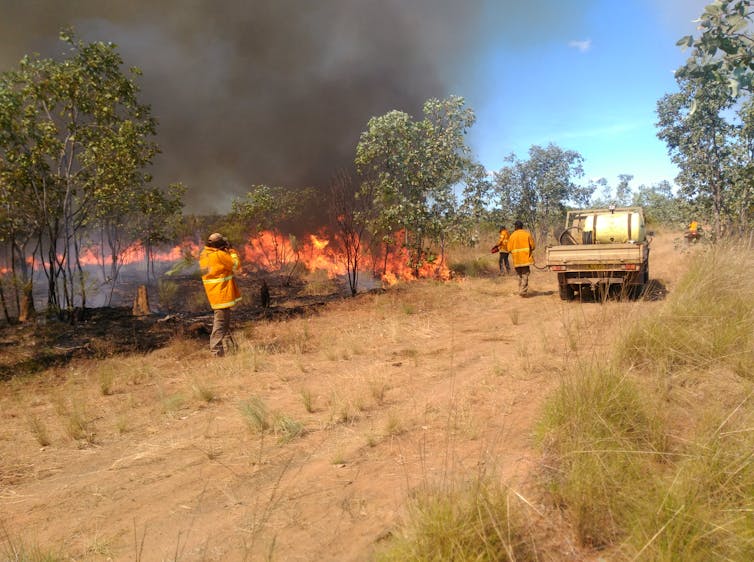
Northern Australia is by far the most fire-prone region of Australia, with enormous bushfires occurring annually across thousands of square kilometres. Many of these vast, flammable landscapes have precious few barriers to slow down a fire. Infrastructure and resources are limited, and people are widely dispersed across the region.
Fire risk reduction in the recent past included very local prescribed burning operations. The overall effect was small, with huge greenhouse gas emissions from out-of-control savanna wildfires.
So, what might a better approach look like?
Our team at the Charles Darwin University’s Darwin Centre for Bushfire Research has been working with Indigenous land managers, conservation, research and government organisations in northern Australia for the last 25 years to find more effective ways to manage wildfires.
These collaborations have led to a new approach, blending modern scientific knowledge with traditional Indigenous land management practices to reduce bushfire risk.
How? By reducing fuel load through a patchy mosaic of small, low intensity, burns early in the fire season that cut the risk of late dry season fires when greenhouse gas emissions are much greater.
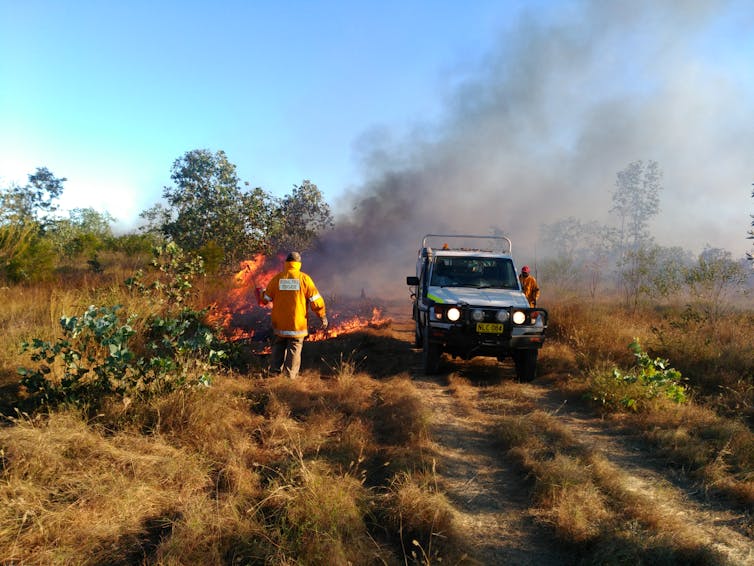
By collaborating with Indigenous ranger groups, this experience shows Australia can develop economically sustainable long-term solutions to manage bushfire risks — and shows what might be possible for other natural hazards such as cyclones and floods.
Such collaborations deliver benefits such as:
- reducing the risk of wildfires and other natural hazards
- engaging widely with dispersed remote communities
- building community resilience to bushfires and other natural hazards
- reducing greenhouse gas emissions (which soar when savanna fires get out of control)
- saving government costs
- protecting biodiversity and
- conserving water.
When done well, a collaborative approach to emergency management can create opportunities on country, enhance cultural and learning opportunities for Indigenous peoples and deliver environmental benefits for everyone.
Making Fire Management Economically Sustainable: A Case Study
Indigenous fire management skills and traditions have long been practised in Australia but part of the challenge, as one study put it, is “finding the economic means to reinstate this type of prescribed strategic management.” In other words, how do we pay for it?
After Australia ratified the Kyoto Protocol in 2007, there was renewed focus on reducing wildfires in Australia’s tropical savannas due to their significant role in creating greenhouse gas emissions.
In collaboration with Indigenous land managers and others, our collective efforts helped to develop what’s known as the savanna burning methodology. This system incentivises management of fire in the north.
Under this method, Indigenous land managers in tropical savannas can earn income for managing fire on their land to reduce greenhouse gas emissions. This is done through a tightly controlled system in which their emissions savings are measured in terms of carbon credit units.
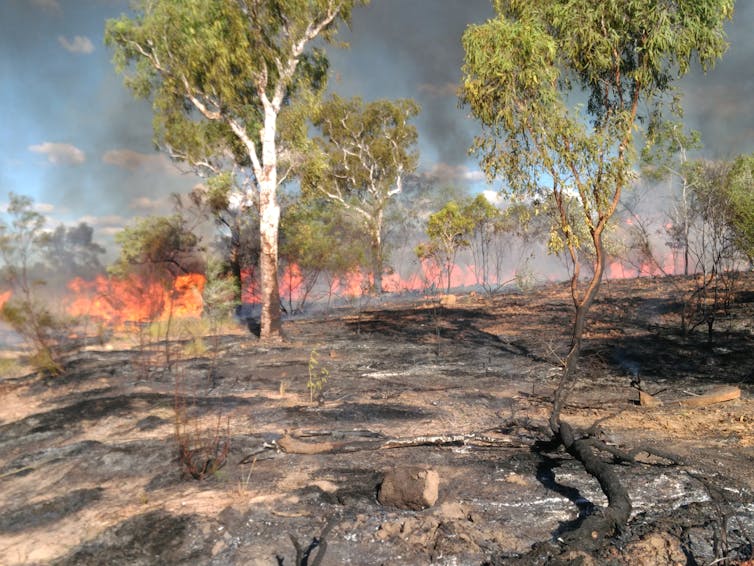
Global And Local Benefits
This approach has allowed a new carbon economy to bloom in remote northern Australia. As one study put it:
Since the development of the first savanna-burning methodology determination in 2012, 25% of the entire 1.2 million km2 eligible northern savannas region is now under formally registered savanna-burning projects, currently generating [more than] A$30m per year.
These self-acquired funds go far to support Indigenous rangers to develop and improve skills so they can continue improving fire management across the north.
As Dean Yibarbuk, fire ecologist and senior traditional owner in West Arnhem Land has said:
This fire management program has been successful on so many levels: culturally, economically and environmentally. Through reinstating traditional burning practices, new generations of landowners have been trained in traditional and western fire management, hundreds of thousands of tonnes of greenhouse gas have been abated, and the landscape is being managed in the right way.
A consistent and reliable flow of funds from carbon contracts, as well as other government and philanthropic sources, further offers many other socio-economic benefits. It has been instrumental in allowing art centres, weed and feral animal control businesses, rock art conservation projects, and bi-cultural schools to flourish.
Investing Money To Save Money
This system shows what’s possible with the right engagement and policy levers. Perhaps one day a similar approach could help reduce risk from other kinds of natural disasters, all while building community resilience.
In the future, could we have similar systems where flood mitigation projects or cyclone risk reduction projects are made economically viable for local communities?
This would reduce reliance on emergency services. It also makes it less likely cultural protocols are breached when non-local emergency personnel are sent in. For example, tree removal is a common cyclone risk reduction practice but it’s important to know which trees are culturally significant in a community, and why you need to leave them alone.
For these approaches to work, genuine and ongoing engagement with Indigenous peoples and dispersed remote communities is essential.
As a start to this engagement, we brought together Indigenous leaders, government representatives, and emergency management agency personnel from across the north for a meeting at Charles Darwin University late last year, supported by the Bushfire and Natural Hazards Cooperative Research Centre.
Many of the key personnel in these groups were meeting for the very first time, despite having worked for years on trying to address the same problems.
With appropriate funding, we could make such gatherings regular events so it’s easier for these stakeholders to work together. Long term collaborations can reduce disaster risk for northern Australian communities who live there permanently, build their resilience, and cut significant costs for Australian governments.
Resources to cover training, transport, and logistics are crucial to implement such an integrated approach.
Long term solutions cost money. But by drawing on local Indigenous knowledge and expertise on disaster risk reduction, we can make huge savings in the long term.
This story is part of a series The Conversation is running on the nexus between disaster, disadvantage and resilience. You can read the rest of the stories here.![]()
Kamaljit K Sangha, Senior Ecological Economist, Charles Darwin University; Andrew Edwards, Research Fellow Bushfires, Charles Darwin University, and Willie Rioli Sr, Fire Coordinator for the Tiwi Islands, Indigenous Knowledge
This article is republished from The Conversation under a Creative Commons license. Read the original article.
Against the odds, South Australia is a renewable energy powerhouse. How on Earth did they do it?
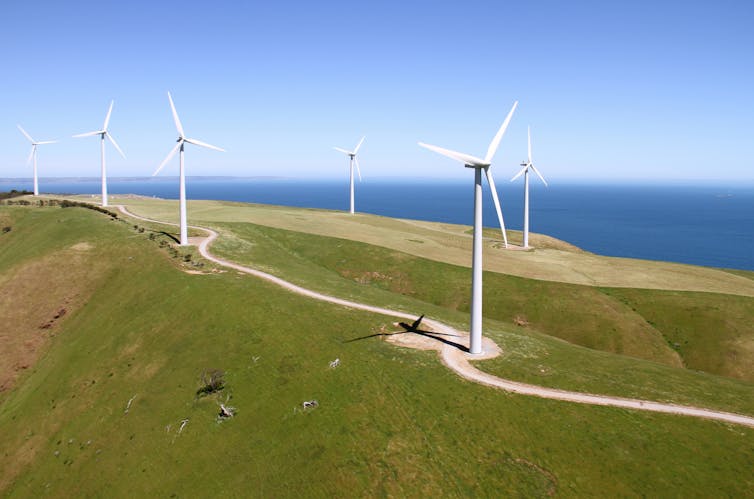
Less than two decades ago, South Australia generated all its electricity from fossil fuels. Last year, renewables provided a whopping 60% of the state’s electricity supply. The remarkable progress came as national climate policy was gripped by paralysis – so how did it happen?
Our research set out to answer this question. We analysed policy documents and interviewed major actors in South Australia’s energy transition, to determine why it worked when so many others fail.
We found governments need enough political power to push through changes despite opposition from established fossil fuel interests. They must also watch the energy market closely to prevent and respond to major disruptions, such as a coal plant closing, and help displaced workers and their towns deal with the change.
South Australia shows how good public policy can enable dramatic emissions reduction, even in a privately owned electricity system. This provides important lessons for other governments in Australia and across the world.

Why Is The Energy Transition So Hard?
In decades past, fossil-fuel-dominated energy markets revolved around a few big, powerful players such as electricity generators and retailers. Overhauling such a system inevitably disrupts these incumbents and redistributes benefits, such as commercial returns, to newer entrants.
This can create powerful - and often vocal – losers, and lead to political problems for governments. The changes can also cause hardship for communities, which can be rallied to derail the transition.
The change is even harder in a privatised energy market, such as South Australia’s, where electricity generators and other players must stay profitable to survive. In the renewables shift, fossil fuel businesses can quickly become commercially unviable and close. This risks supply shortages, as well as price increases like those after Victoria’s Hazelwood coal plant closed in 2017.
The obstacles help explain why a wealthy nation such as Australia, with extremely high per capita emissions and cheap, plentiful renewable resources, has struggled to embrace its clean energy potential. Even frontrunners in environmental policy, such as Germany, have struggled to make the switch.
Read more: Nationals' push to carve farming from a net-zero target is misguided and dangerous
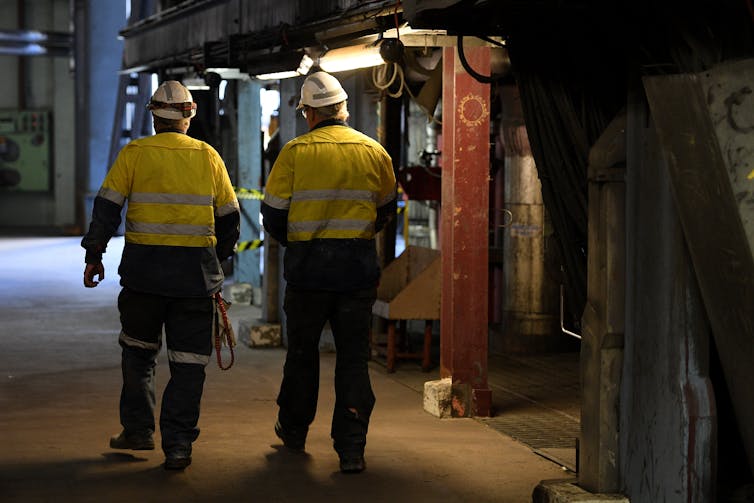
How South Australia Did It
South Australia is a dry state – extremely vulnerable to climate change – with abundant wind and solar resources. These factors gave it the motivation and means to transition to renewables.
The South Australian Labor government, elected in 2002, adopted a target for 26% renewables generation by 2020. At the time, wind energy was already a competitive supplier of new generation capacity in Europe, creating an established wind farm industry looking to invest.
Some of South Australia’s best onshore wind potential was located near transmission lines running 300 kilometres from Port Augusta to Adelaide. This greatly reduced the cost of connecting new wind generators to the grid.
South Australia benefited greatly from the federal renewable energy target, established by the Howard government in 2001 and expanded under the Rudd government.
The scheme meant the South Australian government didn’t need to offer its own incentives to meet its renewables target – it just had to be more attractive to private investors than other states. This was a relatively easy task. Under the state Labor government, South Australia’s energy and environment policy was consistent and coordinated, in contrast to the weak and inconsistent policies federally, and in other states.
To attract renewable energy investors, the government made laws to help construct wind farms in rural zones away from towns and homes. New wind farms were regularly underwritten by state government supply contracts.
As the transition progressed, the state’s largest coal generator, at Port Augusta, was wound back and eventually closed. To help workers and the town adjust, the state government supported employment alternatives, including a A$6 million grant towards a solar-powered greenhouse employing 220 people.
The Labor government enjoyed a long incumbency, and the state was not heavily reliant on the export of fossil fuels. This helped give it the political leverage to push through change in the face of opposition from vested interests.
Read more: No point complaining about it, Australia will face carbon levies unless it changes course
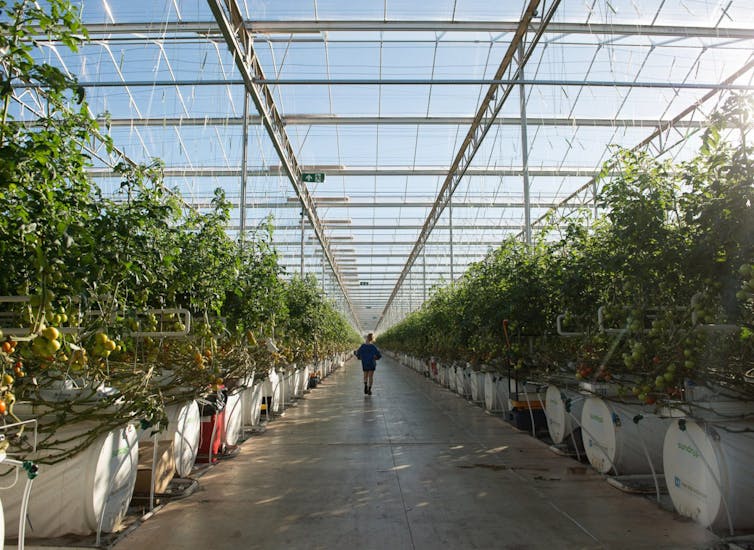
It’s Not Easy Being Green
South Australia’s transition was not without controversy. Between 2014 and 2018, the state’s consumer electricity prices rose sharply. While critics sought to blame the increasing renewables share, it was largely due to other factors. These include South Australia’s continued reliance on expensive gas-fired power and the closure of the Hazelwood coal-fired power station in neighbouring Victoria, which fed large amounts of power into South Australia.
And in late 2016, South Australia suffered a statewide blackout. Again, renewables were blamed, when the disaster was in fact due to storm damage and overly sensitive trip switches.
After a second, smaller blackout six months later, the then federal treasurer Scott Morrison brought a lump of coal into parliament and argued South Australia’s renewables transition was:
…switching off jobs, switching off lights and switching off air conditioners and forcing Australian families to boil in the dark as a result of their Dark Ages policies.
In 2018, Labor lost office to a Liberal party highly critical of the renewables transition in opposition. But by then, the transition was well advanced. In our view, specific legislation would have been required to halt it.
The state Liberal government has now firmly embraced the renewables transition, setting a target for 100% renewable electricity by 2030. By 2050, the government says, renewables could generate 500% of the state’s energy needs, with the surplus exported nationally and internationally.

Leading The World
The South Australia experience shows a successful renewables transition requires that governments:
have enough political power to advance policies that disadvantage energy incumbents
monitor the energy market and respond proactively to disruptions
limit damage to displaced workers, businesses, consumers and communities.
It also highlights the importance of having transmission infrastructure near renewable resources before new generators are built.
As energy markets the world over grapple with making the clean energy transition, South Australia proves it can be done.
Read more: The Texas deep freeze left the state in crisis. Here are 3 lessons for Australia ![]()
Michael McGreevy, Research Associate, Flinders University and Fran Baum, Matthew Flinders Distinguished Professor, Foundation Director, Southgate Institute for Health, Society & Equity, Flinders University
This article is republished from The Conversation under a Creative Commons license. Read the original article.
 Shorebird Identification Booklet
Shorebird Identification Booklet
The Migratory Shorebird Program has just released the third edition of its hugely popular Shorebird Identification Booklet. The team has thoroughly revised and updated this pocket-sized companion for all shorebird counters and interested birders, with lots of useful information on our most common shorebirds, key identification features, sighting distribution maps and short articles on some of BirdLife’s shorebird activities.
The booklet can be downloaded here in PDF file format: http://www.birdlife.org.au/documents/Shorebird_ID_Booklet_V3.pdf
Paper copies can be ordered as well, see http://www.birdlife.org.au/projects/shorebirds-2020/counter-resources for details.
Download BirdLife Australia's children’s education kit to help them learn more about our wading birdlife
Shorebirds are a group of wading birds that can be found feeding on swamps, tidal mudflats, estuaries, beaches and open country. For many people, shorebirds are just those brown birds feeding a long way out on the mud but they are actually a remarkably diverse collection of birds including stilts, sandpipers, snipe, curlews, godwits, plovers and oystercatchers. Each species is superbly adapted to suit its preferred habitat. The Red-necked Stint is as small as a sparrow, with relatively short legs and bill that it pecks food from the surface of the mud with, whereas the Eastern Curlew is over two feet long with a exceptionally long legs and a massively curved beak that it thrusts deep down into the mud to pull out crabs, worms and other creatures hidden below the surface.
Some shorebirds are fairly drab in plumage, especially when they are visiting Australia in their non-breeding season, but when they migrate to their Arctic nesting grounds, they develop a vibrant flush of bright colours to attract a mate. We have 37 types of shorebirds that annually migrate to Australia on some of the most lengthy and arduous journeys in the animal kingdom, but there are also 18 shorebirds that call Australia home all year round.
What all our shorebirds have in common—be they large or small, seasoned traveller or homebody, brightly coloured or in muted tones—is that each species needs adequate safe areas where they can successfully feed and breed.
The National Shorebird Monitoring Program is managed and supported by BirdLife Australia.
This project is supported by Glenelg Hopkins Catchment Management Authority and Hunter Local Land Services through funding from the Australian Government’s National Landcare Program. Funding from Helen Macpherson Smith Trust and Port Phillip Bay Fund is acknowledged.
The National Shorebird Monitoring Program is made possible with the help of over 1,600 volunteers working in coastal and inland habitats all over Australia.
The National Shorebird Monitoring program (started as the Shorebirds 2020 project initiated to re-invigorate monitoring around Australia) is raising awareness of how incredible shorebirds are, and actively engaging the community to participate in gathering information needed to conserve shorebirds.
In the short term, the destruction of tidal ecosystems will need to be stopped, and our program is designed to strengthen the case for protecting these important habitats.
In the long term, there will be a need to mitigate against the likely effects of climate change on a species that travels across the entire range of latitudes where impacts are likely.
The identification and protection of critical areas for shorebirds will need to continue in order to guard against the potential threats associated with habitats in close proximity to nearly half the human population.
Here in Australia, the place where these birds grow up and spend most of their lives, continued monitoring is necessary to inform the best management practice to maintain shorebird populations.
BirdLife Australia believe that we can help secure a brighter future for these remarkable birds by educating stakeholders, gathering information on how and why shorebird populations are changing, and working to grow the community of people who care about shorebirds.
To find out more visit: http://www.birdlife.org.au/projects/shorebirds-2020/shorebirds-2020-program
Aussie Bread Tags Collection Points

Australia’s Eucalypt Of The Year Is Back For 2021!
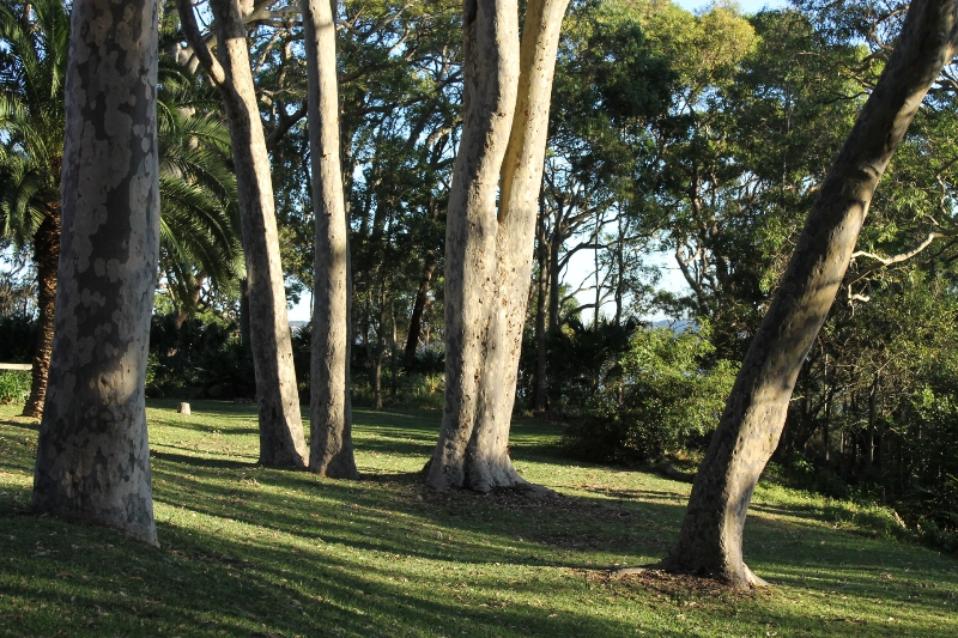
Surf Life Saving NSW State Championships: 2021 NSW Age Championships - Day 1 & 2
Surf Life Saving NSW reports that it was smiles all round, and a few tears, for some of the state’s littlest surf lifesavers after two days of fierce competition at the 2021 NSW Championships. For many, it was their first taste of competing at a major carnival with water events held at Swansea Belmont SLSC and the beach sand events at Redhead SLSC.

Avalon Beach SLSC competitors doing their best - SLS NSW photo
After contending with very challenging conditions on day one, the surf dialled down a notch to allow the Under 9, 10 and 11 age groups to get through a full program of teams events on day two.
As expected, the dominance of Sydney clubs Newport and last year’s title winner North Curl Curl, was evident with some great racing on display.
Jocelyne Melbourn from North Curl Curl braved the big surf to win the U10 Surf Race then backed up on day two to take the U10 Surf Team medal with Grace Lawry, Emma Windsham and Evie Davis. The girls also nailed the U10 Board Relay event to stamp their mark on the age group. The U11 Female Board Rescue was another gold their way.
Sadie Maggs from Newport SLSC was always the one to watch in the U11 girls and the pocket rocket did not disappoint, taking out the U11 Ironwoman title along with gold in the Board Race.
“I have two older brothers who compete. My brother started off really liking the Iron race and he taught my whole family. We train as a really big group at Newport, catching waves almost everyday. That race was all about the sprint up the beach and not messing up on the shorey,” said Sadie.
In one of the most exciting finishes of the carnival, last year’s winners of the Board Relay from Cudgen Headland SLSC came from behind in the last leg with an incredible sprint up the beach to win the U11s, beating Newport who led for the entire race. The ecstatic trio of Isabella Arghyros, Charli Mills and Jarrah Onley said the extra work on their transitions and keeping the power on up the beach paid off.
“We got off to an alright start and Izzy caught up and did a sprint up the beach that won it for us,” said Jarrah.
“I didn’t think I was going to catch up to the Newport girl,” said Isabella. “I just really wanted to get first again because State is a big deal and I just really wanted to do well.
“We want to thank Newport because they pushed us so hard this year,” said Charli.
Looks like you all had a great time and some good fun. Video below
Other Wildlife Noises You Can Hear At Night: Frogs!
We forgot the frogs - and we should know this, we have a pond in our front yard and often hear them calling at night. Across from us are a creek and wetland and, after rain, the sound of frogs all croaking away is loud enough to make the whole night air sound as though it is full of frogs.
So, to add to our list of Wildlife Noises You Can Hear At Night In Pittwater: for youngsters, we add frogs!
We've already shared a few insights into this little frog, a Peron's tree frog (Litoria peronii) - so what other frogs may you hear singing away at night in Pittwater?
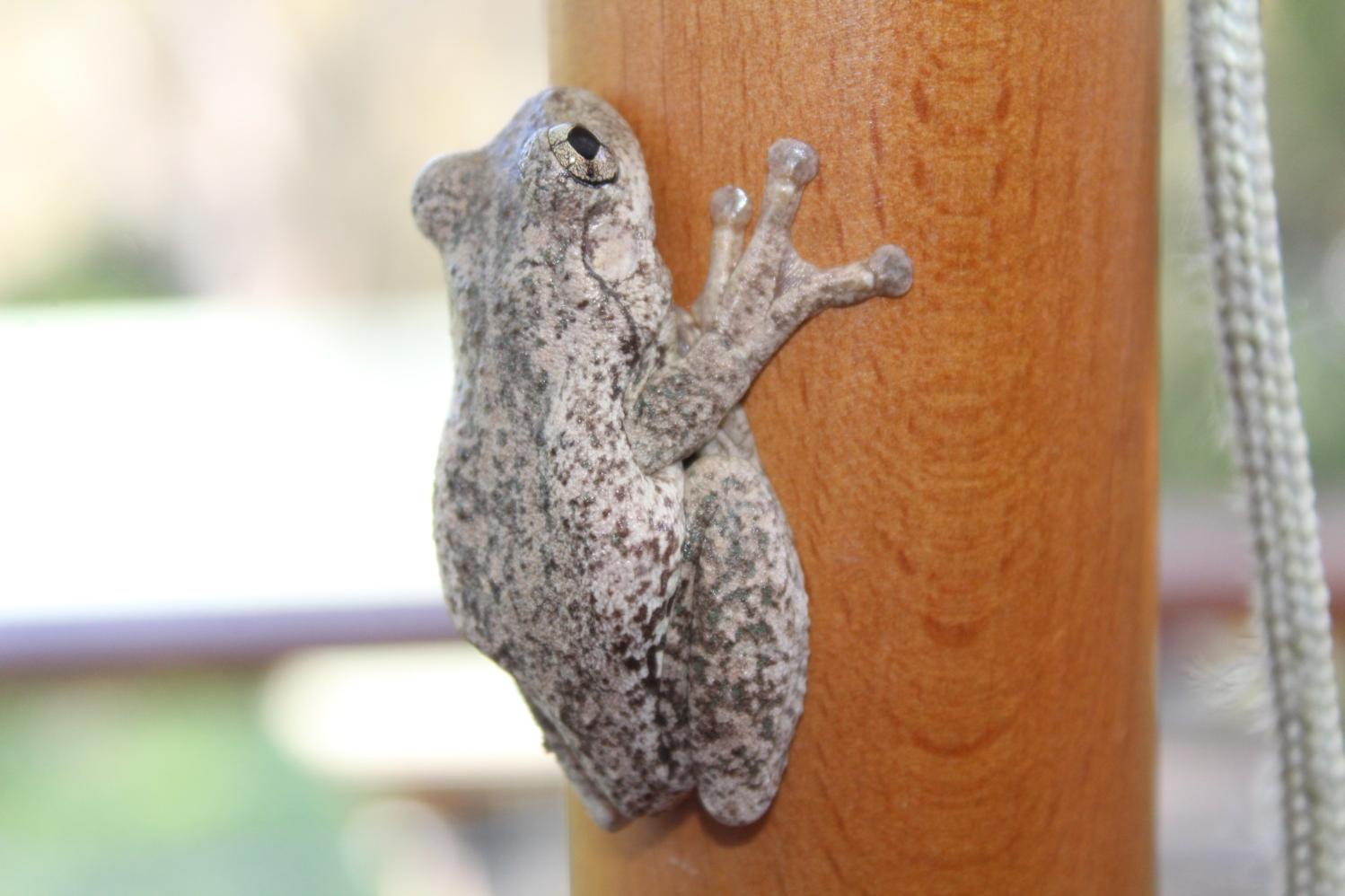
The Giant Burrowing Frog is a large slow-moving frog growing up to 10 centimetres in length. Its slowness makes it very vulnerable to predators. It gets its name from its oversized feet and muscular back legs which it uses to dig down into the earth and build burrows for breeding.
The Great Burrowing Frog usually spawns in a small water-filled burrow or under thick vegetation in dams, ditches, and slow flowing streams. The tadpoles hatch and escape when the water rises to flood the burrow.
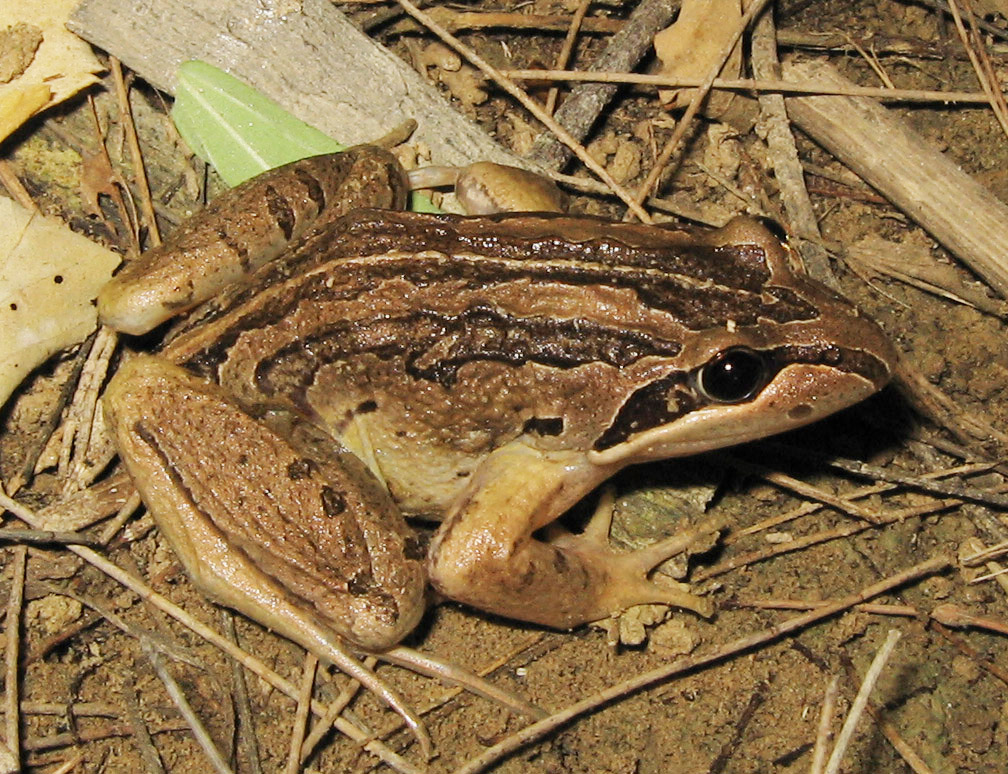
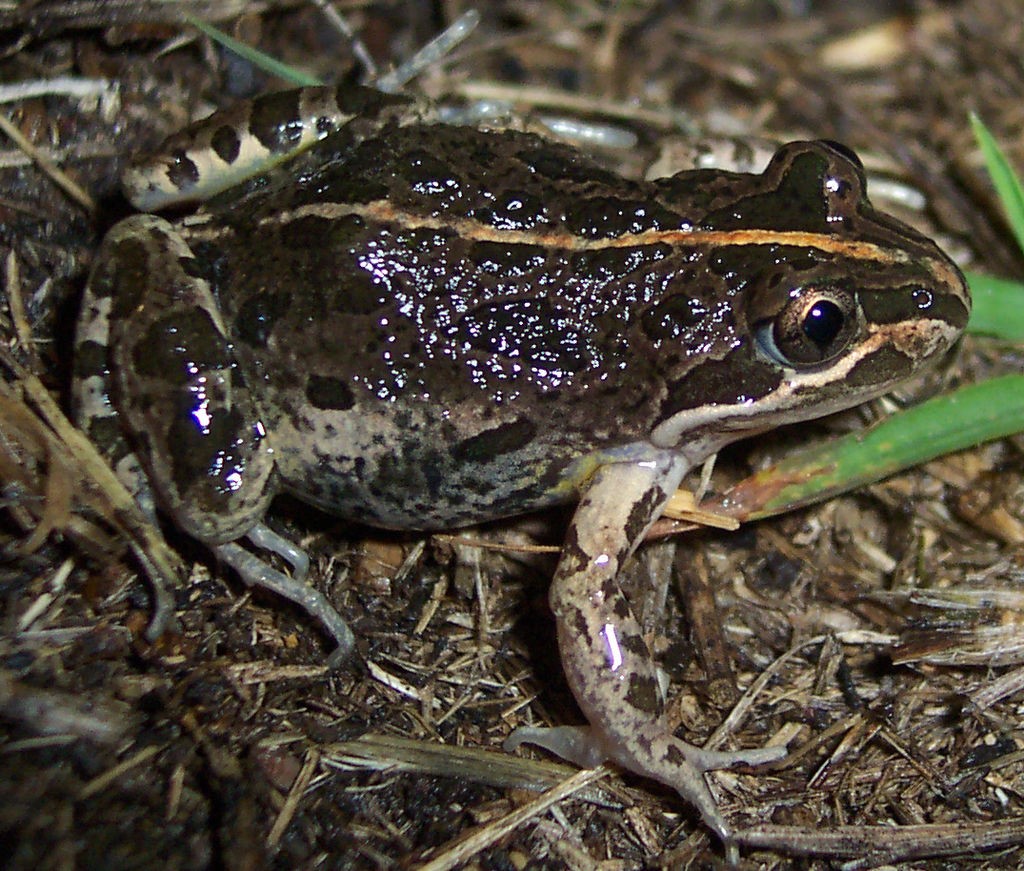
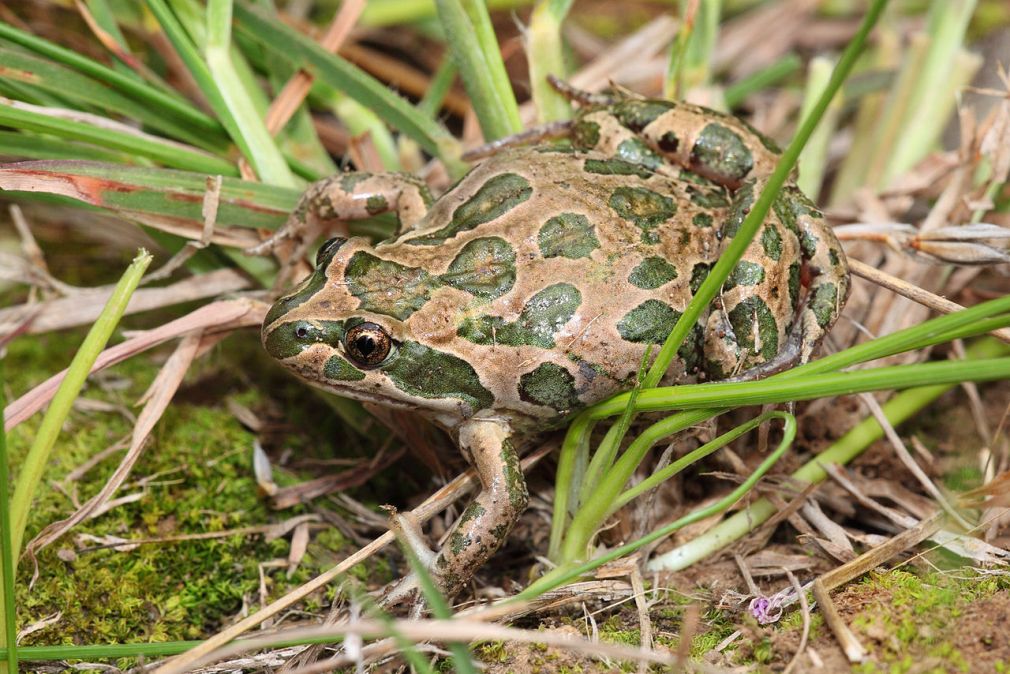
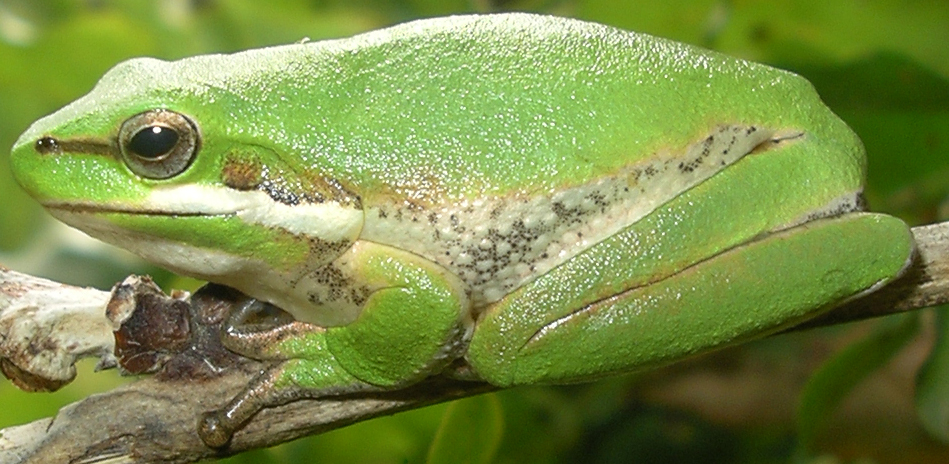
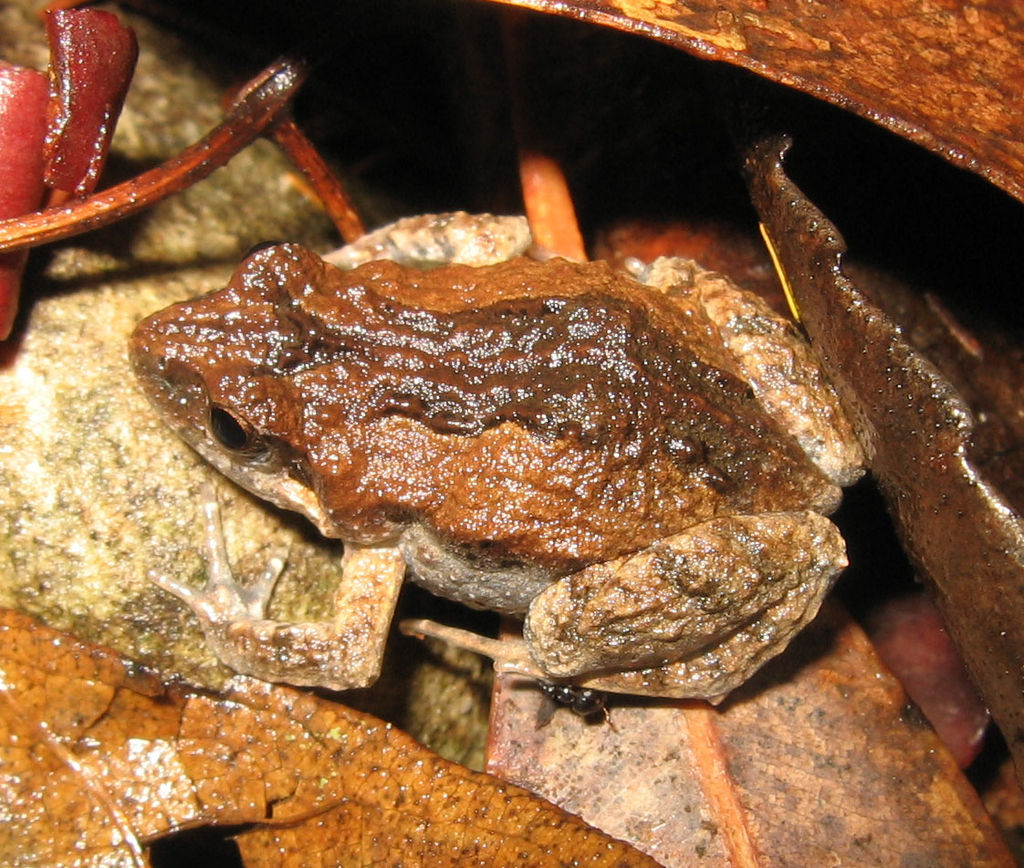
Have a look here and see if you can figure it out: https://www.backyardbuddies.org.au/explore/bugs-and-insects
Biggest Names In Australian Surfing To Compete In The 2021 Vissla Central Coast Pro.
Wednesday, 24 February 2021
By Surfing NSW
The Vissla Central Coast Pro will bookend a massive Australian 2021 World Surf League (WSL) Qualifying Series (QS) season, when it lands in Avoca Beach.
The elite six-day WSL QS 3000 rated event will form the final stop on the Vissla NSW Pro Surf Series and will take place in Avoca Beach from the 2 March – 7 March 2021.
The four-event series will see three QS 1000 rated events (Maroubra, Great Lakes and Port Stephens) and one men’s and women’s QS 3000 (Central Coast).
The Vissla Central Coast Pro will also comprise of the women’s Sisstrevolution Central Coast Pro division.
Current WSL Championship Tour surfers Ryan Callinan, Julian Wilson, Ethan Ewing, Adrian Buchan, Owen Wright, Sally Fitzgibbons, Macy Callaghan, Keely Andrew and Isabella Nichols are currently all slated to compete in the event.
In 2020, the WSL revealed a new format for 2021, which included creating distinct seasons between the QS (the regionalised development tier), the Challenger Series (the global battleground for Championship Tour qualification) and the Championship Tour (the world’s best surfers competing for the World Title).
The new tour structure will provide a more streamlined and affordable career pathway for WSL athletes by allowing up-and-coming surfers to develop closer to home without financially over-leveraging themselves. Athletes will compete on their regional QS tour in hopes of qualifying for the Challenger Series (CS), and ultimately the Championship Tour, which will reduce the economic pressure on surfers and their sponsors, as well as provide increased opportunities to celebrate local stars.
The QS will run from January through to July 2021 and determine who has qualified for the CS, which will run from August through to December 2021. Each region will have an allocation of surfers that can qualify for the CS through their regional tour. Athletes will be able to roll over points from 2020 QS events into the current season. Australia/Oceania will receive an allocation of ten men’s and eight women’s spots onto the Challenger Series based on the regional QS rankings.
Parliamentary Secretary for the Central Coast and Member for Terrigal Adam Crouch is elated to see a world-class event return to the region.
“This QS 3000 ranked event provides an even greater opportunity for professional surfers to earn points and is the only event of its kind in Australia,” Mr Crouch said. “With hundreds of competitors and spectators expected to descend on Avoca, this six-day event will boost our local businesses, accommodation, restaurants and retail following what has been a really difficult 2020.”
Central Coast Council Administrator, Mr Dick Persson AM said the Central Coast is thrilled to be one of the host locations for this prestigious series.
“These are world-class events and I encourage locals and visitors to head to Avoca Beach, and all of the host locations, to witness these incredible athletes in action in a beautiful setting,” Mr Persson said.
Having grown up surfing on the Central Coast, but now residing on the Gold Coast, World Championship Tour surfer Macy Callaghan is excited to return to her local region to compete for the first time in close to five years.
“I can’t wait to return to the region where I grew up surfing to compete in this event,” said Callaghan. “The Vissla NSW Pro Surf Series played a huge part in helping me to qualify for the Championship Tour and I’m super excited to be back competing on one of the beaches I grew up surfing throughout my childhood.”
Surfing NSW CEO Luke Madden thinks that the Vissla Central Coast Pro and the entire Vissla NSW Pro Surf Series has proven itself as one of the premier competitive surfing legs anywhere in the world.
“The Vissla NSW Pro Surf Series has given multiple CT surfers the added momentum to get their campaigns off to a flying start at the beginning of the year,” said Madden. “Over the years we’ve seen people like Morgan Cibilic, Ethan Ewing, Macy Callaghan, Wade Carmichael and even internationals like Yago Dora compete in this leg of QS events and we can’t wait to see the 2021 series finish with a bang on the Central Coast.”
WSL Asia Pacific Tour Manager Will Hayden-Smith shared Madden’s anticipation at seeing who would claim the top positions on the QS rankings following the Vissla Central Coast Pro.
"Finishing this string of QS events with a 3000 is really exciting," Hayden-Smith said. "The Avoca event will be a really important one in the context of the competitors’ careers. Doing well at a 3000 can go a long way to cementing yourself a spot on the Challenger Series which is the main aim for all of the competitors. The other exciting aspect of this event is the number of elite Championship Tour competitors that have entered and will use the event as a warmup to the Aussie CT leg. Some of surfing's biggest names will descend on Avoca which is not only a great opportunity for the spectators but the young up and coming competitors who may get the opportunity to surf against one of their heroes."
All events will be webcast through worldsurfleague.com, surfingnsw.com.au and the WSL App.
For more information on these events head to worldsurfleague.com, surfingnsw.com.au or the free WSL App.
2021 Vissla NSW Pro Surf Series Event Schedule
Event 1: Great Lakes Pro, Boomerang Beach, Tuesday 16 – Friday 19 February 2021.
Event 2: Port Stephens Pro, Birubi Beach, Sunday 21 – Tuesday 23 February 2021.
Event 3: Mad Mex Maroubra Pro, Maroubra Beach, Friday 26 – Sunday 28 February 2021.
Event 4: Vissla Central Coast Pro, Avoca Beach, Tuesday 2 – Sunday 7 March 2021.
The 2021 Vissla NSW Pro Surf Series will be proudly supported by the NSW Government through its tourism and major events agency, Destination NSW. The series will also be proudly supported by Vissla, Randwick City Council, Central Coast Council, Mid Coast Council, Port Stephens Council, Mad Mex, Sisstrevolution, Middle Rock Holiday Park, Moby’s Beachside Retreat, Avoca Beach Hotel, WSL and Surfing NSW.
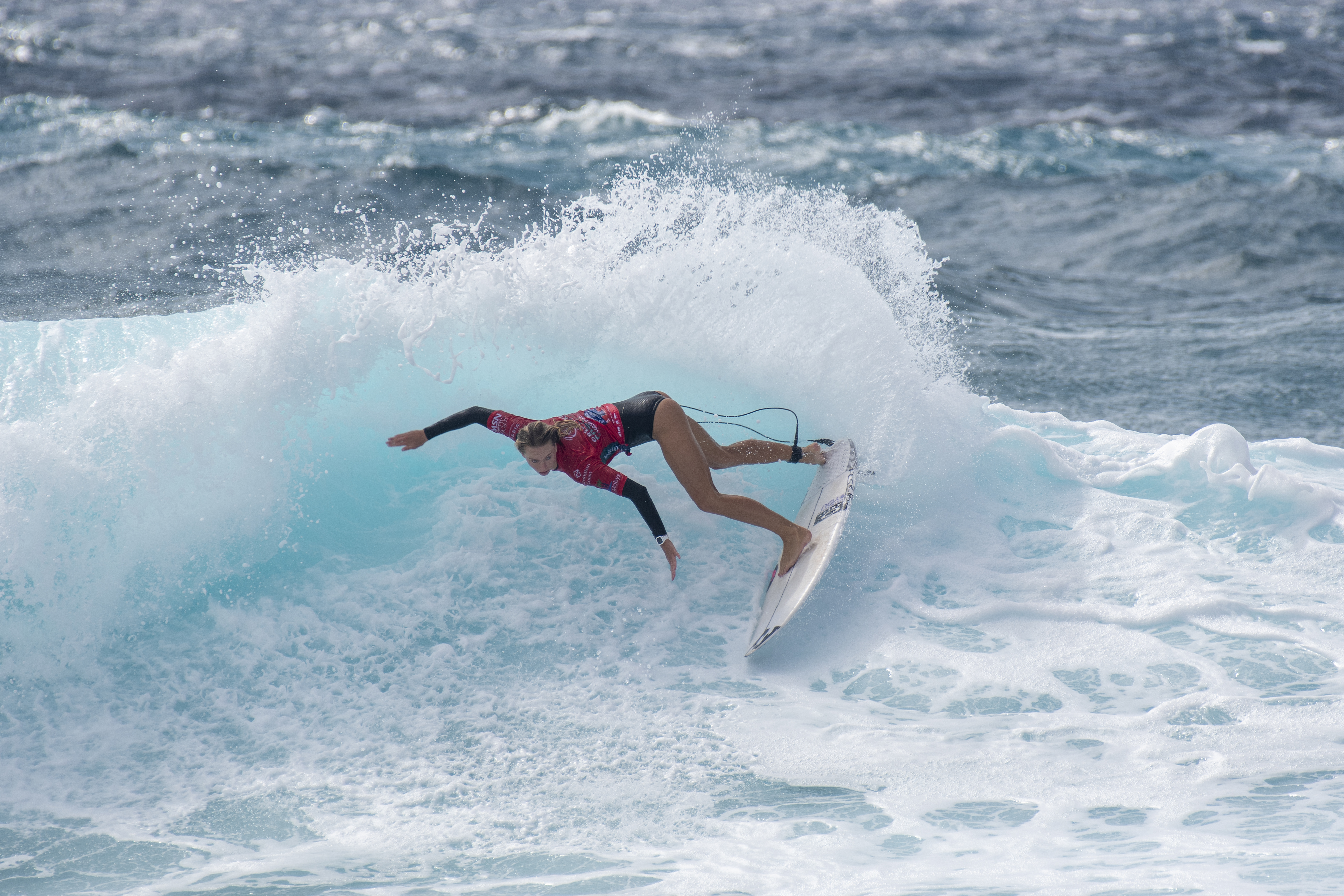
ABOVE: Having grown up surfing on the Central Coast, but now residing on the Gold Coast, World Championship Tour surfer Macy Callaghan is excited to return to her local region to compete for the first time in close to five years. Photo by Ethan Smith / Surfing NSW
Welcome To Pittwater High School
Published February 24, 2021 by Pittwater HS
Pittwater High is comprehensive and co-educational and an integral part of the Pittwater Community. It has an established reputation for academic, cultural and sporting excellence with a tradition of outstanding achievement in musical performance and sailing. Our purpose is to sustain a school culture in which students are actively engaged in learning in an environment of continuous improvement. We aim to develop the knowledge skills and values of each child in a happy and supportive environment. The school's natural park-like environment is exceptional. Facilities are well resourced and maintained and include a multi-purpose centre, tennis courts, networked computer laboratories, a large oval and playing fields, and specialist facilities for agriculture and horticulture.
Meet The Next Generation Of Creators And Innovators: Student Showcases Reflect Student Responses To Contemporary Issues

Jordan Turns His Passion For Fitness Into A Rewarding Career
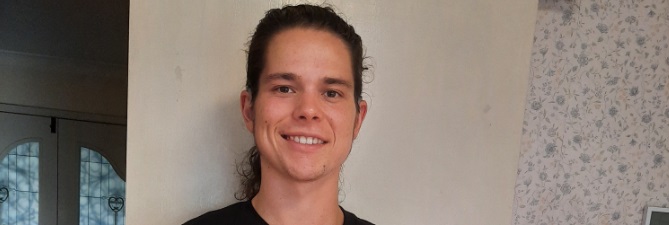

NSW Youth Advisory Council 2021 Applications Now Open
- Question: What do you think are the important issues affecting children and young people in NSW? Please explain why you think these issues are important. (As a guide, your answers should be no more than 250 words.)
- Question: What life experiences have you had which would assist you in contributing to the Council’s work?
- Question: Details of any current or past voluntary or community activities you have been involved in.
- We'll ask a few questions about you and your background.
Applications Now Open For Y NSW Youth Parliament
NSW Youth Week 2021: 16 To 24 April
- share ideas
- attend live events
- have their voices heard on issues of concern to them
- showcase their talents
- celebrate their contribution to the community
- take part in competitions
- have fun!
Express Yourself Exhibition 2021
The talent and creativity of more than 40 HSC Visual Art students on the Northern Beaches will be on display for the annual Express Yourself exhibition at the Manly Art Gallery & Museum (MAG&M) from February 19th until March 28th 2021.
The winners of the $3,000 Manly Art Gallery & Museum Society Youth Art Award and $5,000 Theo Batten Bequest Youth Art Award will be announced on Friday 19th of February. These two awards are granted annually to students featured in the exhibition.
Artist statements will be displayed alongside the artworks describing the inspirations and influences that informed the works and the students’ creative journeys.
Visitors are encouraged to vote for their favourite artwork in the KALOF People’s Choice Award which is announced at the end of the exhibition period.
Express Yourself is also part of Art Month Sydney, March 2021.
Exhibition: 19 February - Sunday 28 March 2021, 10am - 4pm daily (excluding Mondays)
Teachers' preview: Friday 19 February, 5 - 6pm. Bookings essential via Council’s website
Art Walk and Talk: Saturday 27 February, 3 – 4pm: Artists walk through the exhibition and discuss their works with the curator. Bookings essential via Council’s website.
Tomorrow's Canberra (In 1972)
Made available February 26, 2021 by the NFSA
From the Film Australia Collection. Made by the Commonwealth Film Unit 1972. Directed by Fred Schepisi. Of particular interest to those involved in urban planning, this film describes the general development of Canberra as Australia’s national capital and as an inland metropolis. It portrays the Canberra of the late 1960s and outlines the planning techniques and systems used to put into effect programs for the development of “the Canberra of tomorrow”. The film takes the viewer through the city, showing the pattern of current development, and gives as insight into discussions between personnel of Canberra’s planning and development authority - the National Capital Development Commission - and advisory committees and associated departments regarding projects such as the Parliamentary Triangle and Tuggeranong.
I teach architecture and have been in quarantine a lot lately. Here are ways design can protect us against COVID-19
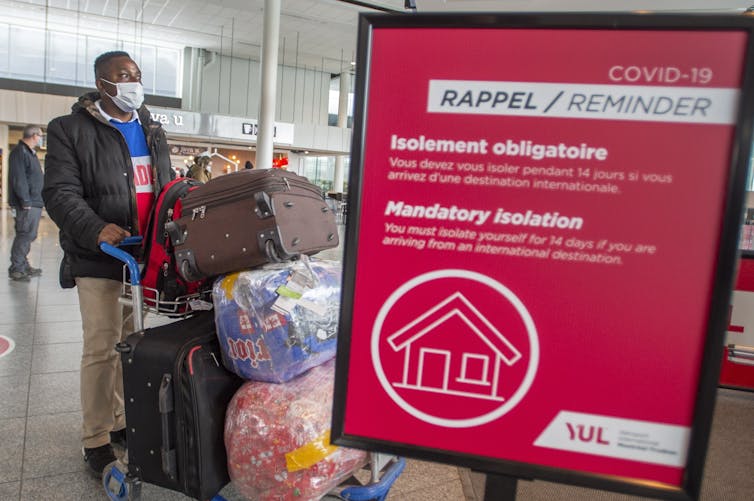
The coronavirus has been escaping with distressing frequency from quarantine hotels, threatening serious outbreaks. To make things worse, multiple variants of the virus, possibly more infectious and deadly, have recently been detected. This accentuates the need for robust hotel quarantine, especially in countries like Australia that have controlled community transmission.
Read more: Perth is the latest city to suffer a COVID quarantine breach. Why does this keep happening?
While the hotel quarantine system has received wide attention, relatively few people have had the opportunity to experience and observe it first hand. Even fewer have been able to compare with other regions handling similar challenges. I happen to have needed to travel overseas and thus experienced quarantine in several places over the past months.
Based on my experience as an academic in architecture, I share some thoughts and observations here on how the design or redesign of buildings, infrastructure and cities can help people overcome the health challenges created by COVID-19.
Our buildings and cities were not designed to handle such extraordinary situations as this pandemic. One consequence is their design has often made the need to touch surfaces unavoidable.
Read more: How worried should I be about news the coronavirus survives on surfaces for up to 28 days?
Take Lifts, For Example
Some of the most frequently touched surfaces in buildings are the buttons in lifts. In some buildings in China, plastic wrap is used to cover the buttons and a sticker showing the time and date of last disinfection is attached nearby. Other buildings provide tissues for people to use as disposable finger covers.
In quarantine hotels, this procedure is even more carefully managed. Staff help guests by pressing the button. This small touch area needs frequent cleaning, which calls for extra human resources.
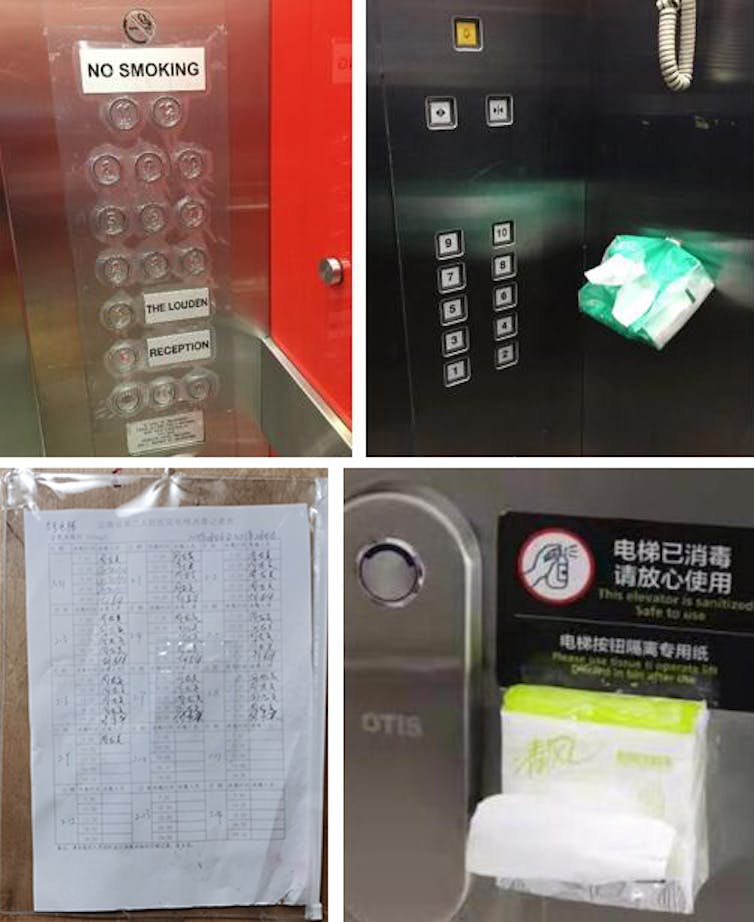
At Baiyunshan airport in Guangzhou, I used a lift with touch-free buttons. The keypad had infrared sensors installed next to the usual button. With just a wave of their finger over the touch-free button, users can select their destination.

Another mode free of physical screens features numbers displayed in a front-projected holographic display. A sensor detects the movement of pressing a button in the air to activate the lift.
This technology is not out of our reach. In response to the pandemic, authorities in Melbourne and Sydney have trialled touch-free buttons using infrared technology at pedestrian crossings.
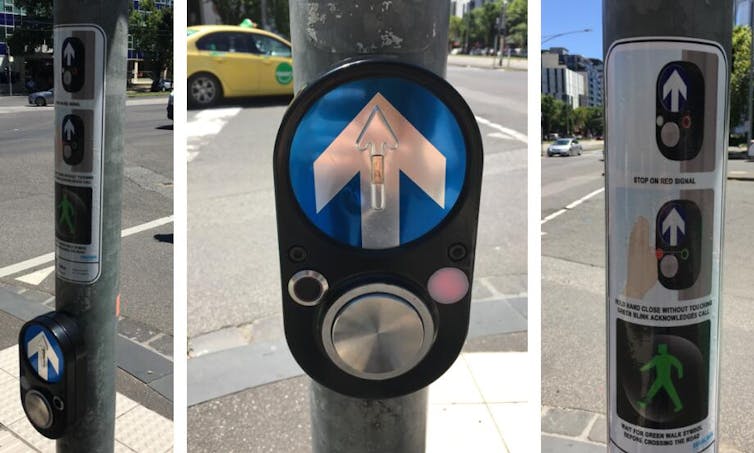
One concern about touch-free buttons is the challenge they present to the visually impaired. Currently, a push-button is placed next to the infrared sensor. An alternative for people who need assistance would be to use gesture or voice commands. Other concerns include reliability and vandal-proofing.
Another sensitive touch spot is the toilet. The airport toilets I visited in Australia, China and Singapore are equipped with touch-free features to activate the flush, tap, soap dispenser and hand dryer. However, the doors and locks cannot function without touch. Touch-free sensors or foot pedals would probably help.
Alternatively, new materials or coatings like antimicrobial polymers could be applied in areas where touch is unavoidable. Of course, care must be taken to ensure the antiviral potency is both reliable and people-friendly.
Read more: Automatic doors: the simple technology that could help stop coronavirus spreading
Design Solutions Don’t Have To Be High-Tech

Interestingly, touch-free public spaces do not always rely on advanced materials or sophisticated technology. In a Melbourne quarantine hotel, I noticed several bollards with foot pedals being used as hand sanitiser dispensers. These are designed to function mechanically and require no power connections.
Instead of a simple stainless steel bollard, this dispenser could be further reimagined as an artistic sculpture integrating the building’s signage at the entrance. Elsewhere, this design could be incorporated into litter bins along the streets.
Usually, for architectural design, circulation patterns are analysed to see how people reach each space and establish the relationships between different areas. For safety purposes, exits are checked to ensure people can evacuate in a timely way. To prepare for future pandemics, these studies could add analysis of touch points in both pandemic and non-pandemic periods.
The shared challenge posed by the pandemic has prompted some innovative ideas. For example, physical reminders to keep a social distance have variously involved using carpet tiles, mowed or trimmed landscape patterns, furniture arrangements, temporary structures and pavements or stickers.
Other solutions involve applying modular construction from well-equipped containers to create emergency hospitals or mobile testing stations.
Read more: Hospital beds and coronavirus test centres are needed fast. Here's an Australian-designed solution
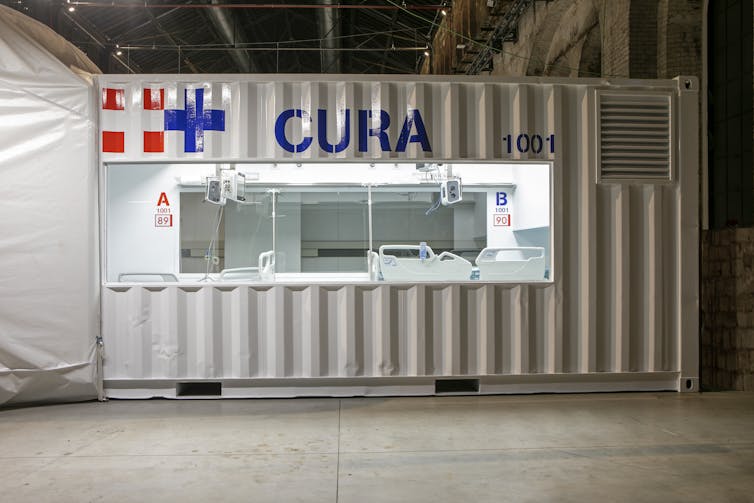
From touch-free public spaces to designing for social distance and modular construction, there are still many ways the design or redesign of our buildings and cities can help to protect the public. Good design is particularly important to protect those in high-risk environments, such as workers and senior citizens in health care and aged care.
Read more: Poor ventilation may be adding to nursing homes' COVID-19 risks
As necessity is the mother of invention, there is nothing like a period of stress to stimulate creativity, industry and innovation.![]()
Mengbi Li, Lecturer in Built Environment (Architecture), First Year College and Research Fellow, ISILC, Victoria University
This article is republished from The Conversation under a Creative Commons license. Read the original article.
Can I have a pet and be housed, too? It all depends...

Barriers to housing for people with pets around Australia are the focus of newly released national research by an interdisciplinary team. Why? Because laws are changing nationally but are highly inconsistent. A systematic national approach is needed to reduce the numbers of people who have to give up their pets to secure housing – especially as we return to post-COVID “normal”.
Six housing experts spanning five Australian universities undertook the study of animal-inclusive housing and options for reform, the first of its kind internationally. It assesses state and territory housing and legislative reforms in the private rental sector, social housing, homelessness services, strata title, aged care and caravan parks. Here they explain what they found.
Read more: As pet owners suffer rental insecurity, perhaps landlords should think again ![]()

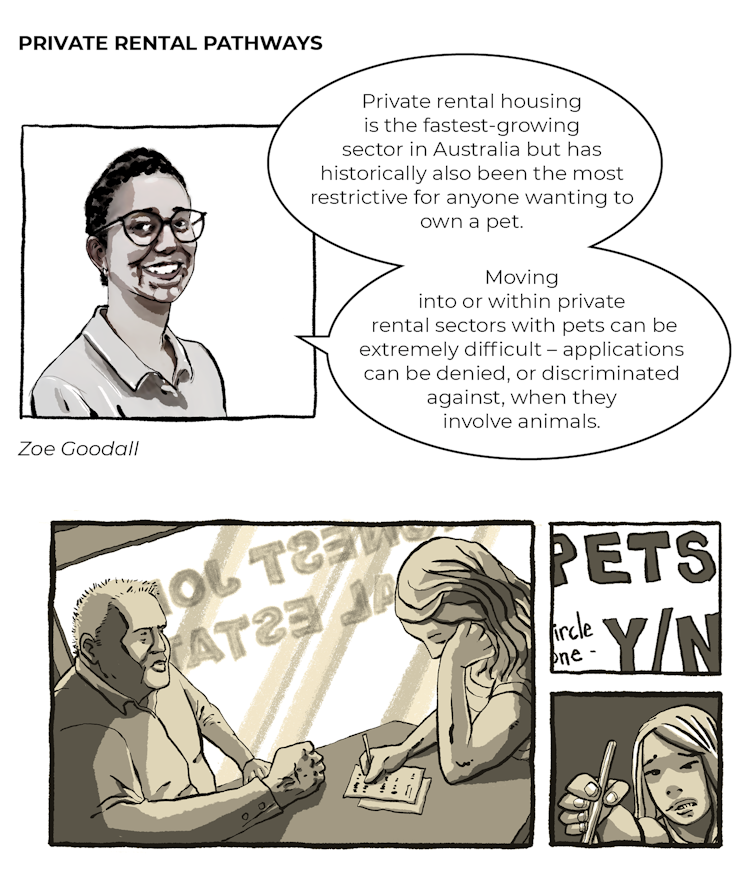

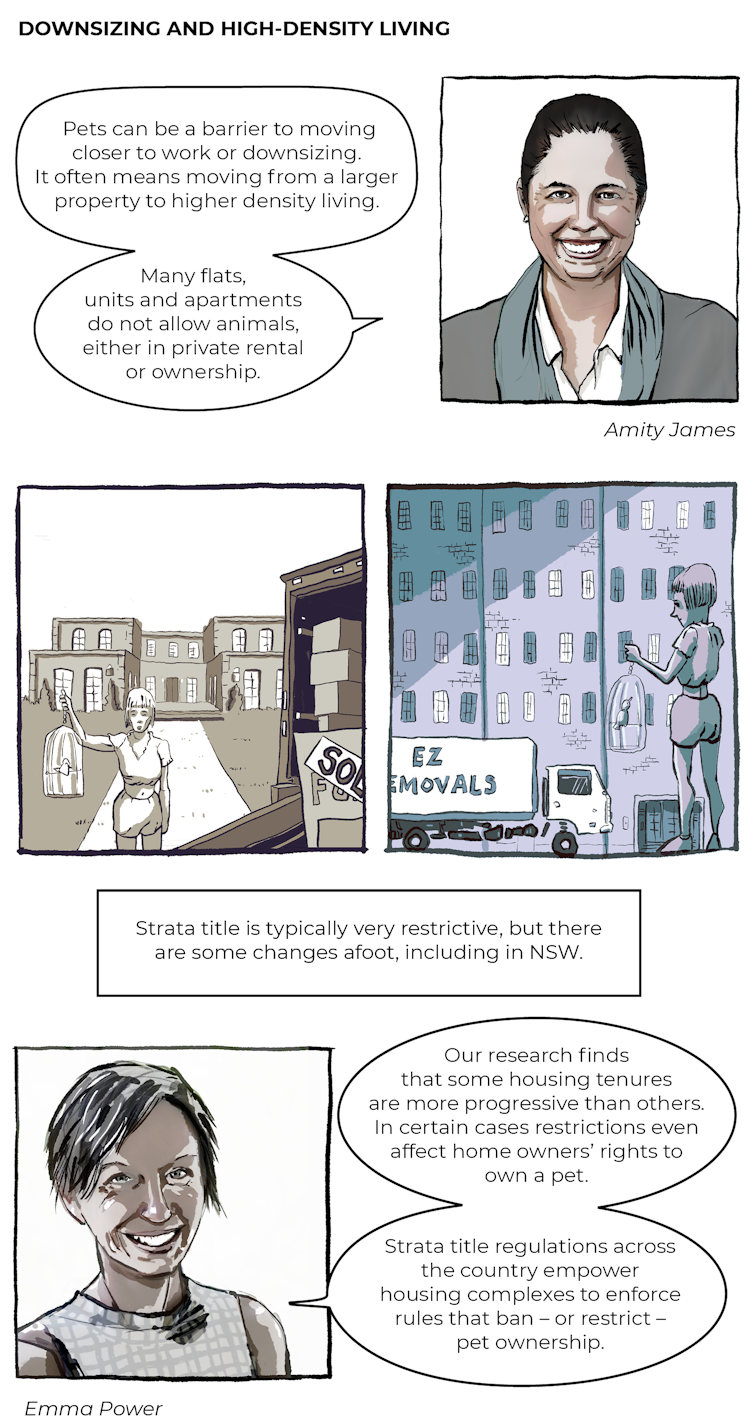


Wendy Stone, Professor of Housing & Social Policy, Centre for Urban Transitions, Swinburne University of Technology; Amity James, Senior Lecturer, School of Accounting, Economics and Finance, Curtin University; Caitlin Buckle, Research Associate in Housing Studies, University of Sydney; Darren C Fisher, Lecturer- Animation, Swinburne University of Technology; Debbie Faulkner, Senior Research Fellow, UniSA Business, University of South Australia; Emma Power, Senior Research Fellow, Geography and Urban Studies, Western Sydney University; Selina Tually, Senior Research Fellow, The Australian Alliance for Social Enterprise, University of South Australia, and Zoe Goodall, Research Associate, Centre for Urban Transitions, Swinburne University of Technology
This article is republished from The Conversation under a Creative Commons license. Read the original article.
The news media bargaining code could backfire if small media outlets aren't protected: an economist explains

When I was the chief economist at the US Federal Communications Commission, we oversaw was the acquisition of DirecTV, the satellite pay-TV platform, by News Corp in 2003.
Prior to the merger, DirecTV did not own significant content, and content-rich News Corp did not own a pay-TV distribution platform.
Economic analysis showed the merged entity would have the incentive to raise the price of certain TV channels, such as the Fox broadcast network and Fox sports channels, that were sold to rival pay-TV distribution platforms and cable companies such as Comcast.
To counteract this anti-competitive harm, we developed what is known as the FCC arbitration mechanism if firms could not agree on a price for a channel.
This is the same mechanism the Morrison government’s news media bargaining code would impose on Facebook and Google in Australia to force them to compensate Australian media companies for linking to and using their content.
In the US context, the arbitration mechanism worked. In particular, News Corp founder Rupert Murdoch complained about his inability to raise prices and subsequently sold DirecTV to get out of the arbitration requirement.
But there are some stark differences between the US and Australian contexts. In particular, there were many other channels in the US that were not affected by the merger, so an arbitrator could use the market price benchmark for what was a reasonable price for a TV channel.
For example, a cable company such as Comcast could submit its contracts with broadcast television networks like ABC, NBC and CBS to benchmark the price for the Fox network.
In the Australian context, there is no such benchmark competitive price for the value of news content. Hence the government’s encouragement for parties to reach commercial agreements before the news media bargaining code takes effect, to better inform the arbitrator.
Although the aims of the bargaining code are laudable, Facebook responded last week with a drastic move: blocking the sharing and publishing of Australian news on its platform. Research indicates this could be devastating to the small news publishers in Australia.

What Happened When Google News Was Shut Down In Spain
In an important study, Stanford economist Susan Athey and her colleagues Markus Mobius and Jeno Pal examined the impact of the withdrawal of Google News from Spain in 2014.
Similar to Australia today, Spanish regulators required that Google pay publishers for news content. In response, Google shut down Google News in Spain.
By studying the online behaviour of a large set of individual users who had agreed to be tracked, they found that overall online news consumption in Spain (as measured by page visits) declined by around 10%, which is consistent with other studies.
But thanks to the use of individual data, they were able to dig deeper and found the decline was concentrated on a specific set of users. People who specifically relied on Google News to initiate a news search reduced their news consumption by about 20%.
In a concerning finding, this reduction in news consumption disproportionately affected smaller publishers, who experienced a dramatic reduction in page visits. In contrast, large publishers saw an increase in visits to their landing page.
This was particularly true in cases of “breaking news”, where large publishers had the advantage of being first to report.
As a result, the authors wrote, large publishers likely saw their advertising revenues increase. And overall, there was also a change in the type of news people consumed, with fewer people gravitating toward breaking news, hard news and news from diverse news outlets.
If the role of Facebook in Australia is similar to Google News in Spain in terms of driving traffic to individual news outlets, then the consequences of Facebook’s recent action will be dire for public interest journalism — and, in particular, the diversity of the Australian media landscape.
It will likely increase the market share of entrenched major media outlets and reduce visits to smaller players. If this is the case, the goals of the news media bargaining code will not have been met. It will have backfired.
Fixed Payments Won’t Lead To More Investment
There is a second and subtle point of economics relating to how the bargaining code is implemented. The arbitration rules under the code now require a digital platform to make a fixed payment to a media outlet for two years of content.
A fundamental principle of economics is that a fixed cost — or a fixed sum of revenue — does not affect a firm’s decision on how much of a product it makes or the quality of what it produces.
As pointed out by economist Josh Gans, this means a fixed payment from Facebook or Google to news providers will not necessarily lead to any more dollars being invested in journalism by major media firms.
If the objective of the code is to drive a healthier public interest journalism landscape, this is a shortcoming that needs to be addressed.
Read more: The old news business model is broken: making Google and Facebook pay won't save journalism
To ensure the best possible outcomes for small-to-medium-sized public interest news producers — an important element of media diversity — the government should consider using the revenue from Google and Facebook for short-term capacity funding in the first 12 months of the code.
This would be funding specifically earmarked for the small- and medium-size publishers who will be the most adversely affected.
However, the principles of economics also tell us that a fixed amount of costs or revenue does affect one decision by a firm — the choice to either shut down or stay in business.
So, the code may have a positive effect on Australian public interest journalism to the extent that any payments may keep struggling, small publishers in business with an influx of steady cash.
This further reinforces that the focus should be on small publishers, rather than the larger news organisations.
Most of the attention on the code, thus far, has been on larger players. But if the real issue is in the sustainability of small publishers, we must look beyond the code to introduce additional mechanisms to ensure the viability of public interest journalism, including regional news or journalism for hyper-local markets.
This could include, for instance, taxation reform to fund public interest journalism.
Even with the best possible outcome under the code, measures such as this are necessary and must be implemented as a matter of urgency.![]()
Simon Wilkie, Dean, Faculty of Business and Economics; Head of Monash Business School, Monash University
This article is republished from The Conversation under a Creative Commons license. Read the original article.
We can't trust big tech or the government to weed out fake news, but a public-led approach just might work

The federal government’s News Media and Digital Platforms Mandatory Bargaining Code, which passed the Senate today, makes strong points about the need to regulate misinformation.
In response, Google, Facebook, Microsoft, TikTok, Redbubble and Twitter have agreed to abide by a code of conduct targeting misinformation.
Suspiciously, however, the so-called Australian Code of Practice on Disinformation and Misinformation was developed by, well, these same companies. Behind it is the Digital Industries Group (DIGI), an association formed by them and some other companies.
In self-regulating, they hope to show the government they’re addressing the proliferation of misinformation (false content spread despite intent to deceive) and disinformation (content that intends to deceive) on their platforms.
But the only real commitment under the code would be to appear to be doing something. Since the code is voluntary, the platforms signed up can basically “opt in” to the measures at their own discretion.
A Modest Goal
The code suggests platforms might release data trends about known misinformation, or might label known false content or content spread by seemingly unreliable sources. They might identify and restrict paid political ads trying to deceive users, or they might reveal the sources of misinformation.
These are all great actions the platforms “might” take, as they aren’t bound by the code. Rather, the code will likely encourage them to police misinformation around an “issue of the day” by taking visible action around one topic, without confronting the spread of other profitable false information on their platforms.
The consequences of this would be great. False “news” can lead to dangerous conspiracies and armed attacks. It can even influence elections, which we saw in 2019 when Facebook hosted posts claiming the Labor party would introduce a “death tax” on inheritance. Things quickly spiralled.
The government has promised tougher regulation of misinformation if it feels the voluntary code isn’t working. Although, we should be careful about allowing the powerful regulate the powerful.
It’s unclear, for instance, whether the Morrison government would view posts about a supposed Labor “death tax” as being a real threat to democracy — even though this is misinformation.
Read more: How political parties legally harvest your data and use it to bombard you with election spam
There Are Better Options
Regulating speech on the internet is difficult. In particular, misinformation is hard to define because often the distinction between genuinely dangerous misinformation, and valued myth or opinion, is based on a community’s values.
The latter is information that may not be accurate but which people still have a right to express. For instance:
Nickelback is the best band on the planet.
This is probably untrue. But the statement is relatively harmless. While the actual “truthfullness” is lacking, its subjective nature is clear. Considering this nuance, the solution then is for misinformation to be policed by the community itself, not an elite body.
Reset Australia, an independent group that targets digital threats to democracy, recently proposed a project in which interested tech platforms and members of the public could be subscribed to a live list of the most popular misinformation content.
A citizen-run jury could monitor the list to help ensure public oversight. This would involve the whole public sphere in the debate about misinformation, not just the government and platforms.
Once fake news is in the open, it becomes easier for public figures, journalists and academics to expose.
Who Can You Trust More?
Another effective strategy would be to create a national register of misinformation sources and content. Anyone could register what they think is misinformation to the Australian Communications and Media Authority, helping it quickly identify malicious sources and alert the platforms.
Digital platforms already do this internally, both through moderators and and by allowing the public to report posts. But they don’t show how posts are judged and don’t release the data. By creating a public register, ACMA could monitor whether platforms are self-regulating effectively.
Such a register could also keep a record of legitimate and illegitimate information sources and give each one a “reputation score”. People who accurately reported misinformation could also receive high ratings, similar to Uber’s ratings for drivers and passengers.
While this wouldn’t restrict anyone’s right to expression, it would be easier to point to the reliability of the source of information.

It’s worth noting this type of community-based peer review system would be open to potential abuse. Movie review site Rotten Tomatoes has had serious problems with people trolling film reviews.
For example, Captain Marvel was awarded a low audience rating because toxic online communities decided they didn’t like the idea of a female superhero, so they coordinated to rate the film poorly. But the platform was able to identify this pattern of behaviour.
The site ultimately protected the film’s score by ensuring only people who had bought a ticket to see the movie could rate it. While any system is open to abuse, so is ‘self regulation’ and communities have shown they can (and are willing to) solve such problems.
Wikipedia is another community-driven peer review resource and one which most people consider highly valuable. It works because there are enough people in the world who care about the truth.
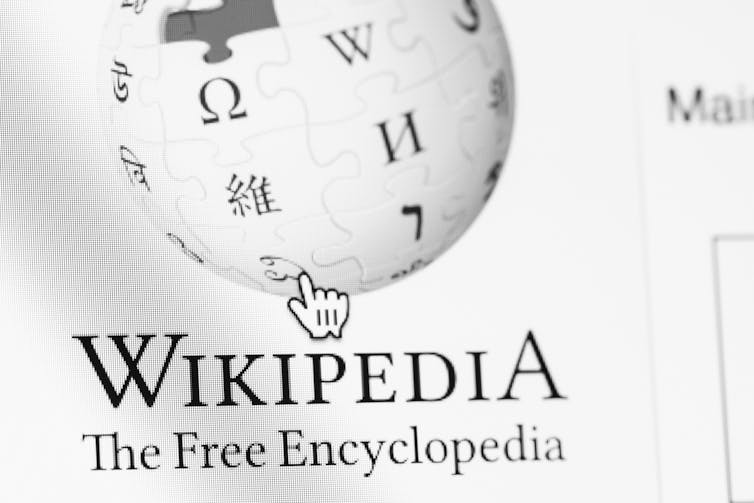
Judging the accuracy of claims made in public allows for a consensus that is open to be challenged. On the other hand, leaving decisions about truth to private companies or political parties could actually exacerbate the misinformation problem.
A Chance To Move News Into The 21st Century
The news media bargaining code has finally passed. Facebook is set to bring news back to Australia, as well as start making deals to pay local news publishers for content.
The agreement between the government and Facebook — which serves the interests of those parties — seems like just another echo of the past. Large media players will retain some revenue and Google and Facebook will continue to expand their immense control of the internet.
Meanwhile, users remain reliant on the benevolence of tech platforms to do just enough about misinformation to satisfy the government of the day. We should be careful about surrendering power to both platforms and governments.
This new code won’t force significant change out of either, despite the pressing need for it.
Read more: Google is leading a vast, covert human experiment. You may be one of the guinea pigs ![]()
Tauel Harper, Lecturer, Media and Communication, UWA, University of Western Australia
This article is republished from The Conversation under a Creative Commons license. Read the original article.
Phantom of the forest: how I rediscovered the rare cloaked bee in Australia, hidden for a century
James B. Dorey, Flinders UniversityIt’s not often you get to cast your eyes on a creature feared to be long-gone.
Perhaps that’s why my recent rediscovery of the native bee species Pharohylaeus lactiferus is so exciting — especially after it spent a century eluding researchers.
But how did it stay out of sight for so long?
A Creature Overshadowed
Australia is home to 1654 named species of native bee. Unfortunately, these are often overshadowed in the eyes of public by the widespread and invasive European honeybee.
Scientific research on Australian native bees is lagging, compared to many other nations.
With this in mind, it may not be surprising to learn some native species can go unnoticed for many years. Although, when it’s the only representative of a whole genus, one might start to worry about losing something special.
In this case the genus is Pharohylaeus, where “pharo” means “cloaked”, as these bees’ first three abdominal segments overlay the others to resemble a cloak.
I found the cloaked bee P. lactiferus during a major east coast sampling effort of more than 225 unique sites. The discovery, and what I learnt from it, helped me find more specimens at two additional sites.
It also made me wonder why P. lactiferus had been missing for so long. Is it naturally rare, hard to find, or perhaps threatened?
Read more: We taught bees a simple number language – and they got it
Taxonomic Trouble
Many Australian bees are very difficult to identify to a species level. In fact, some might be nearly impossible.
However, P. lactiferus is a relatively distinct black and white masked bee. Masked bees are those from the subfamily Hylaeinae, named so because they often have striking, bright facial patterns on an otherwise dark face.
With this distinctive appearance, identification issues weren’t a contributor to the mystery of P. lactiferus.
Seeing Red
Still, despite having sampled extensively across sites and flowering plant species, I only found P. lactiferus on two types of plant: the firewheel tree and the Illawarra flame tree — both of which boast exuberant red flowers.

Bees generally don’t see shades of red, so such plants are usually pollinated by birds. It could be that bee researchers tend to avoid sampling these red flowering plant species for this reason.
Then again, bee vision and bee perception are not always the same. And bees are also guided by their keen sense of smell.
Habitat Specialisation
So far, I’ve only found P. lactiferus within about 200 metres of one major vegetation subgroup, which is tropical or sub-tropical rainforest.
The first specimens I collected were in Atherton, Queensland. I later found more in Kuranda and Eungella. Some of these specimens are now stored in the South Australian Museum.
The habitat specialisation of P. lactiferus may suggest it has an above-average level of vulnerability to disturbances, particularly if it needs a strict set of requirements to make it through its entire life-cycle.
It is one of myriad bee species that nest in narrow, wooden hollows. Some bees such as Amphylaeus morosus dig these themselves and may require specific plant species to make their nest in.
Others such as Exoneurella tridentata need to use holes made by weevil larvae in two particular tree species: western myall and bullock bush.
Rainforests are also notoriously hard to sample. If a bee species spends much of its time in the high canopy, finding it would be difficult.
That said, two early collectors managed to find six specimens of P. lactiferus between 1900 and 1923. So its rarity doesn’t necessarily come down to it being a canopy-dweller.
Read more: The mystery of the blue flower: nature's rare colour owes its existence to bee vision
Potential Threats
We know in the bioregions where P. lactiferus has been found that rainforests have undergone both habitat destruction and fragmentation since European colonisation. This threat hasn’t abated and Queensland is still a land-clearing hotspot.
We also know these rainforests burnt across Queensland every year between 1988 and 2016. The 2019-20 black summer megafires burnt nearly double the area of any previous year.
For some bee species this may not be a problem. But for a species that potentially requires specific foods, habitats and even other species, it could mean local extinction.
Only so many populations of a single species can disappear, before there are none left.
Where Does This Leave Us?
P. lactiferus persists, which is wonderful. Unfortunately, we can’t yet say whether or not it is threatened.
To determine this confidently would require a robust, extensive and targeted survey regime.
We may not be able to undertake such a regime for all 1654 of the named bee species in Australia. But perhaps we could make that effort for the country’s only cloaked bee.![]()
James B. Dorey, PhD Candidate, Flinders University
This article is republished from The Conversation under a Creative Commons license. Read the original article.
Obituary: Sir Michael Somare, 'father' of PNG and colossus of Pacific politics
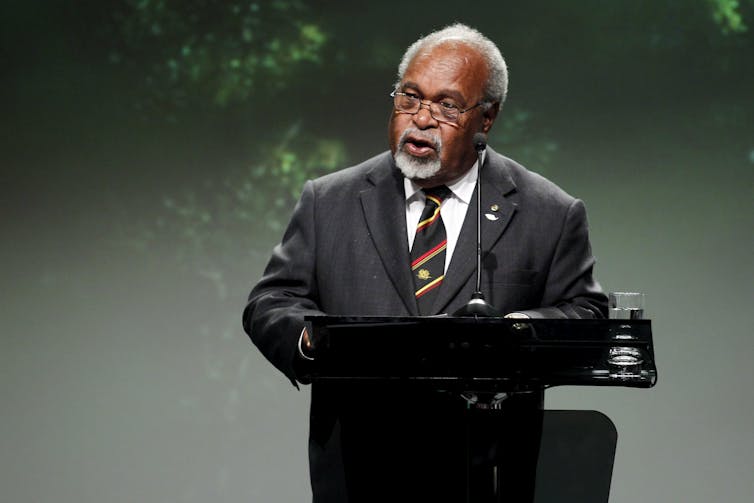
Grand Chief Sir Michael Somare, former prime minister of Papua New Guinea and a giant of Pacific politics, has died from pancreatic cancer. He was 84.
Known as “Mike” to some and “the chief” to others, Somare in more recent years became widely referred to as “the grand chief” – the highest position in his nation’s honours system. In his long career, Somare dominated PNG and Pacific politics.
He was regarded as the “father of the nation” for his role in moving PNG from colonial dependency of Australia to a fully fledged independent state. He helped build a nation that sits at the meeting point between the Pacific and dynamic East Asia with all the strategic, economic and cultural issues that brings.
Somare was the colossus of PNG’s political landscape: chief minister from 1972 to 1975 while the country was still an Australian-administered territory, its first prime minister (1975-1980), as well as its third (1982-85) and 12th (2002-2011, although some consider that his term concluded in 2012).
In fact, for 17 of PNG’s 45 years since gaining independence – more than a third of the period – Somare was its leader. When not in this role, he was very much the power behind the scenes, kingmaker, sometimes troublemaker and – often – peacemaker.
In 1967, Somare joined with other young nationalists, discontented and angered by the slow progress towards independence from Australia, to form one of PNG’s first political parties, the PANGU Pati (Papua and New Guinea United Party). Their criticism of the worst kind of Australian paternalism brought them attention from the colonial authorities, which Somare wrote about using a pseudonym.
Read more: Crisis? What crisis? A new prime minister in PNG might not signal meaningful change for its citizens
In truth, PANGU’s politics were of the mildest variety. When anti-colonial movements in other places were pursuing armed revolution, Somare and his fellows – always a small group of educated (and thus, elite) Papua New Guineans – forecast merely:
[…] if the present system of colonial or territory government continues, with all its inevitable master-servant overtones, serious tensions will develop.
They then made modest calls for self-government by 1968.
When Somare and other PANGU members were elected to PNG’s territorial House of Assembly in 1968, they formed an unofficial opposition to the administration. In April 1972 – before the election of the Whitlam Labor government in Australia – PANGU, with Somare as leader, was able to form a coalition that took the territory to independence in 1975.

In that year, Somare – amazingly – found the time to write his autobiography, Sana, which records his journey from his village in the Murik Lakes area of the Sepik River to becoming the nation’s first prime minister on the eve of PNG’s independence. The book provides a first-hand account of PNG’s path to self-government and nationhood, importantly from the perspective of the colonised.
Always a strong communicator, Somare used the book to foster pride among Papua New Guineans in their own nation, which gained its independence in a way that was both constitutional and peaceful. As its first governor-general, Sir John Guise, famously pronounced on September 16 1975, PNG Independence Day:
[…] we are lowering the flag of our colonisers […] not tearing it down.
The way PNG gained its independence owes a great deal to Somare’s careful devotion to the spirit of sana: a word from his people’s language that denotes taking a peaceful, consensual approach to resolving disputes.
In the face of a colonial system that was often stubborn and narrow-minded, and amid an expatriate population – overwhelmingly Australian – who were too often discriminatory and racist, he could have chosen a path of violent resistance. Instead, he chose the way of peace, of toktok (Tok Pisin for discussion) and of consensus.
Even as a young leader, described in British government confidential notes as “a radical and red-ragger”, he believed in words over guns. It was a quality that was demonstrated in his handling of the separatist movement in Bougainville, which threatened to divide PNG even before it gained independence.
Read more: PNG marks 40 years of independence, still feeling the effects of Australian colonialism
As well as drawing on the principle of sana to keep the nascent state together and prevent secession, Somare’s greatest achievement was bringing a reluctant people to embrace the creation of their nation. Aided by a body of capable and committed PNG leaders in the Constitutional Planning Committee (CPC) that he established soon after becoming chief minister in 1972, Somare set out on a mission to develop a constitution that was, in his words “home-grown”.
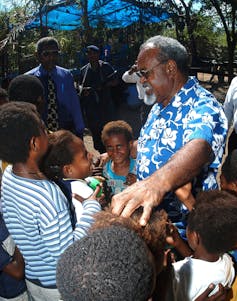
The CPC was given the task of consulting widely with Papua New Guineans in their highlands and islands, to ensure they felt their wishes and beliefs would be fully reflected in the new nation’s foundational document. By the time of independence in 1975, it is reasonable to say this goal had been achieved.
The recently retired secretary-general of the Pacific Islands Forum (PIF), Papua New Guinean Dame Meg Taylor, recalled of that time:
It is perhaps presumptuous for me to say that I was a constitution‐maker, but in some respects we all were. Anybody who went to a CPC meeting […] was a constitution-maker.
In following the principles of sana – consensus, discussion, inclusion and peaceful resolution of conflict – Somare was adhering to a way of dealing with others that is shared across the Pacific region. It is appropriate that Taylor, who learned about sana from working closely with Somare, should have held to these principles in her role as PIF secretary-general.
With her retirement from this role, and even more so with the death of Somare, there is a pressing need for some sana to be deployed, to hold this important Pacific regional organisation together. Toktok, talanoa, or just conversation that recognises a shared identity across the Pacific from West Papua to Rapa Nui (Easter Island), is needed.
It is a tragedy that perhaps the greatest exponent of this – Michael Somare – has left us. His life spanned the modern history of PNG and now, more than 45 years after his nation gained independence, his influence remains profound.
He will be remembered as a quiet but persistent champion of his people. In a region that is dominated by superpower rivalry and challenged by climate change, perhaps we would all do well to learn from his example and practise more sana.![]()
Jonathan Ritchie, Senior Lecturer in History, Deakin University
This article is republished from The Conversation under a Creative Commons license. Read the original article.
Whale Sharks Show Remarkable Capacity To Recover From Injuries Including Partial Fin Re-Growing
Facebook And Google Monies Must Go To Newsrooms Not Boardrooms States MEAA
Placemaking NSW Advisory Committee: Helen Coonan Steps Down
Helen will be missed. During her years at the helm of the former Sydney Harbour Foreshore Authority, latterly Place Management NSW, Helen actively and passionately championed some of our most precious precincts and public spaces.In a relatively short time, Helen and the Board have also made some great strides in helping us on our journey towards our vision to create great places and inject new life and ideas into the management and operation of Placemaking NSW.In the interim, David Borger will serve as acting Chair of the Placemaking NSW independent advisory committee until a new Chair is confirmed. The advisory committee will continue to support our ongoing efforts to streamline the planning, development, and activation functions that enable the creation of great public, community, residential and commercial spaces.
CSIRO Secures Licence To Develop Medicinal Cannabis
Coffs Harbour To Host Iconic Rally Championship
$20 Million For World-Class Events In Country Towns
New NSW Standard For SafeWork Investigations
New Dating Techniques Reveal Australia's Oldest Known Rock Painting And It's A Kangaroo
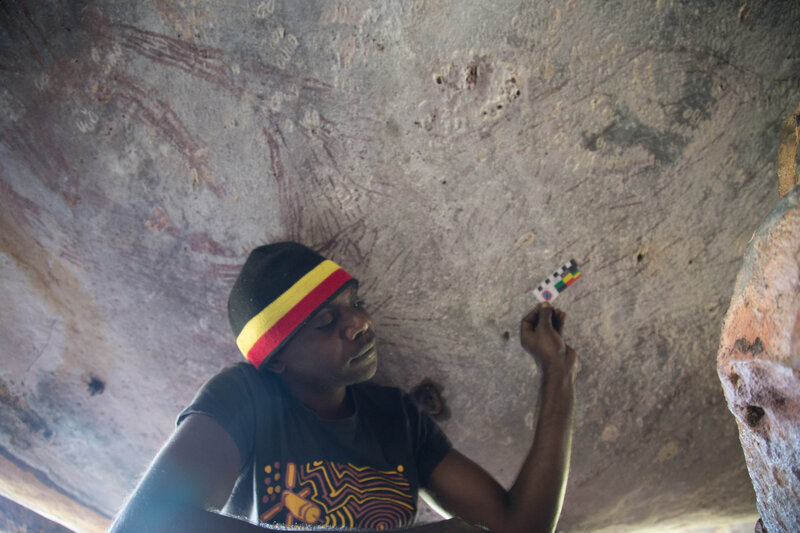
Sewage Study Shows Which Countries Like To Party Hard: The Dutch, Aussies, Kiwis And Americans
Queensland Farmers’ Federation (QFF) Partners With Airbnb
Queensland government unfairly picking irrigation water winners peak organisation states
Disclaimer: These articles are not intended to provide medical advice, diagnosis or treatment. Views expressed here do not necessarily reflect those of Pittwater Online News or its staff.